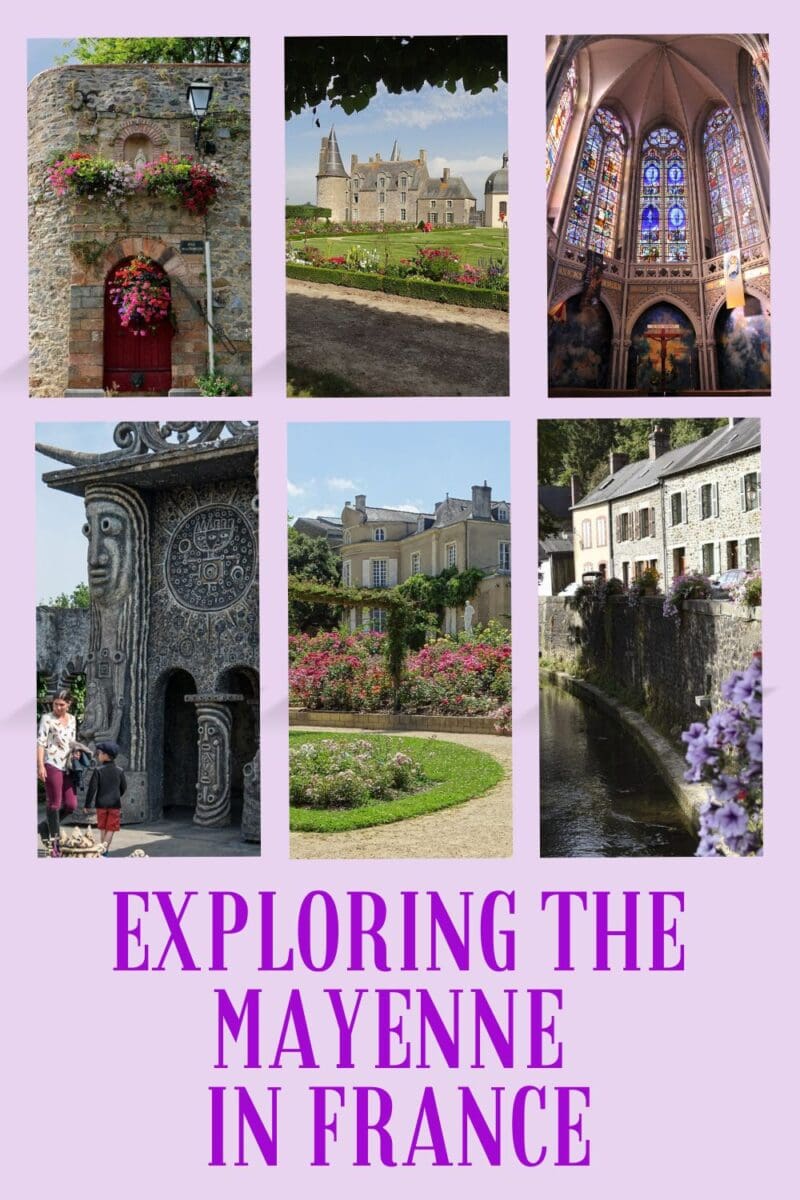Exploring the beautiful Mayenne region of France
The Mayenne department of France is located within the Pays de la Loire region. It is a region that is almost undiscovered by tourists. The Pays de la Loire is in western France, bordered by Brittany on the northwest, Normandy on the north, Centre-Val de Loire on the east, Nouvelle-Aquitaine on the south, and the Bay of Biscay of the North Atlantic Ocean on the southwest.
Mayenne is a landlocked area in the Pays de la Loire region named after the Mayenne River. It is a mainly agricultural department and as such is a very unspoiled region of France. Although the main tourists are French in this region many British or rather English-speaking folks have moved here due to its closeness to the UK and the rest of Europe.
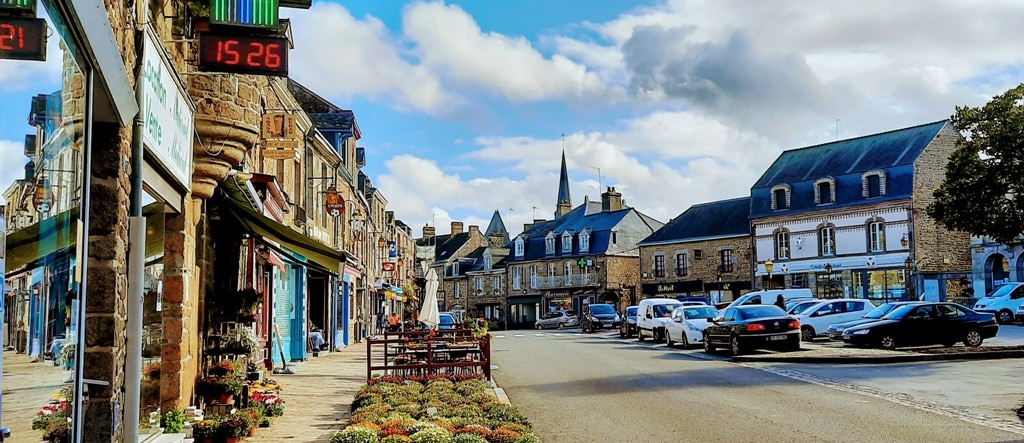
For folks looking for houses and land, Mayenne is the perfect location to buy a beautiful old stone home with lots of acres. These days is has become much more popular due to the Escape to the Chateau TV program shown throughout the world.
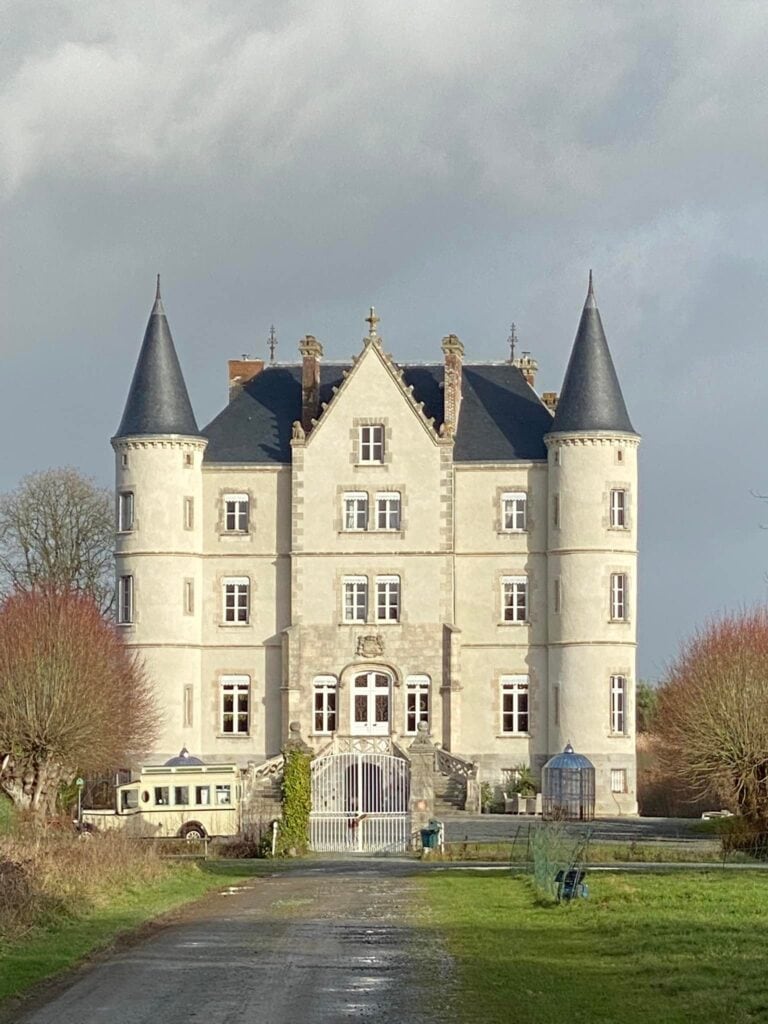
If you arrive by ferry from either Caen or Cherbourg the drive to the Mayenne is pretty straightforward. If you plan to visit the Mayenne when coming to France via Charles de Gaulle airport I would recommend taking a train to Laval and picking up a rental car in Laval.
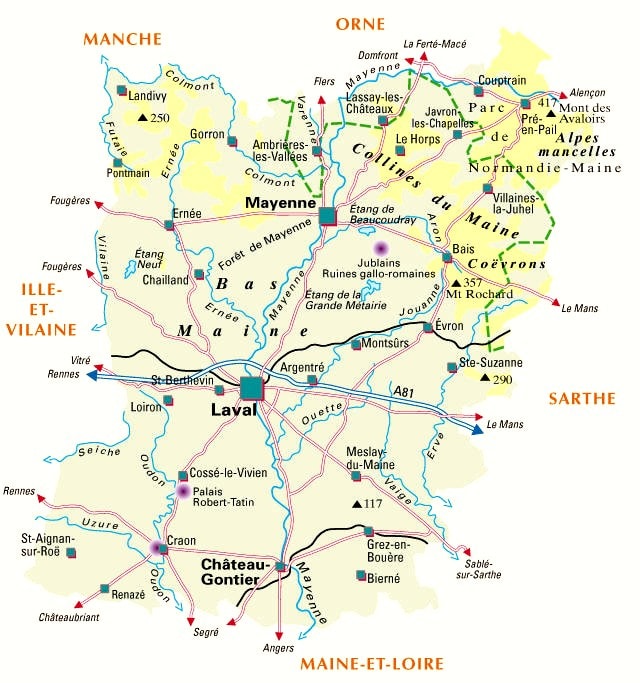
- Exploring the beautiful Mayenne region of France
- Exploring the Mayenne France
- Mayenne – 47 places to visit
- Petite Villages of Character and Les plus beaux villages de France in the Mayenne
- Mayenne attractions
- Gardens and Chateaux to visit in Mayenne
- Garden of Renaudies
- The garden of La Pellerine
- Château et parc de Craon – Le Petit Versailles de la Mayenne
- Gardens and castle of Les Arcis
- Château de Bourgon
- Chateau Gontier
- Saint-Denis d’Anjou
- Clairmont Abbey
- Manor of Favry
- La Grande Courbe
- Hauterives castle and gardens
- Gardens and castle Le Puy
- Chateau de la Rongere
- Château de Varennes l'Enfant
Exploring the Mayenne France
The capital and largest town in Mayenne is Laval in the centre of the department. The River Mayenne flows through it from north to south, passing through the towns of Mayenne, Laval and Château-Gontier.
Mayenne – 47 places to visit
Laval
Laval dates back centuries and the medieval town centre is filled with half-timbered houses dating back through the 15th century. There is also a medieval bridge still standing near the river. Henri Rousseau the painter was born in Laval and you can see some of his paintings in the Museum.
Château de Laval
The area of Laval was settled in the 10the century and the Chateau was built in the 12th century and contains a Renaissance wing from the mid-16th century. The Chateau is on the list of France’s Historic monuments.
Around 1020, Guy de Dénéré established his motte castle on the sides of the hill overlooking the Mayenne, near the ford crossed by an old Roman road linking Paris to Brittany.
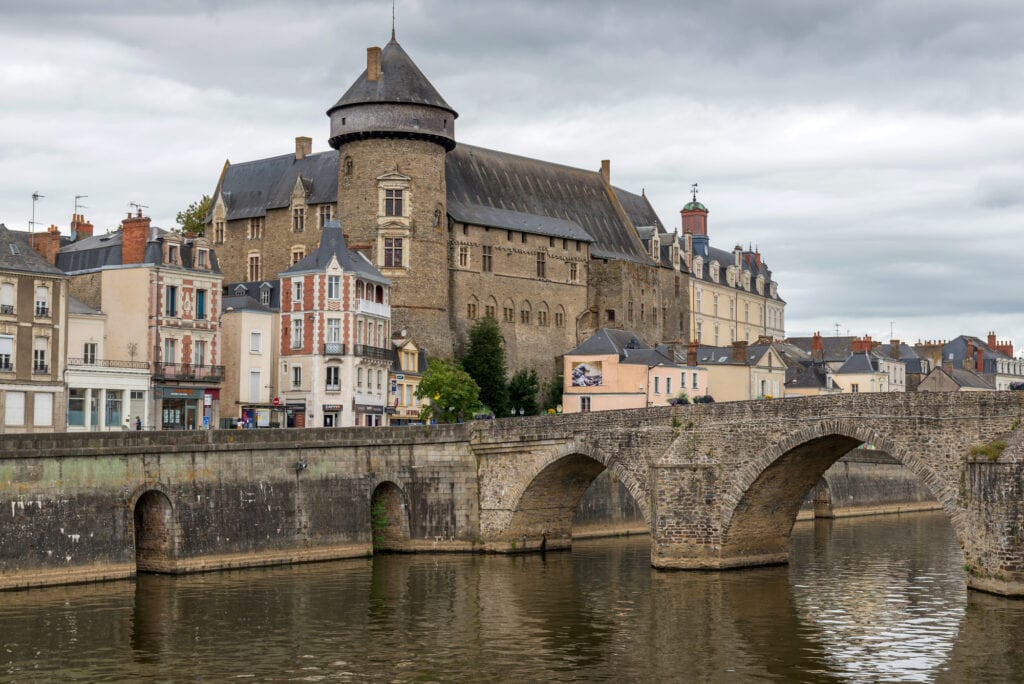
The Chateau is comprised of two buildings the Old Castle (Vieux-Chateau) which is the medieval fortified castle and the New Castle or the Château-Neuf.
During the French Revolution, the Castle became a prison and since 1967 the chateau has been home to the first naive art museum in Europe.
Musée d’Art Naïf – Château-Neuf
Inside the château de Laval is the Musée d’Art Naïf with galleries containing everything from fine art to local archaeology.
There are three paintings by Rousseau at the museum, as well as pieces by other members of the modern art movement like André Bauchant and Camille Bambois.
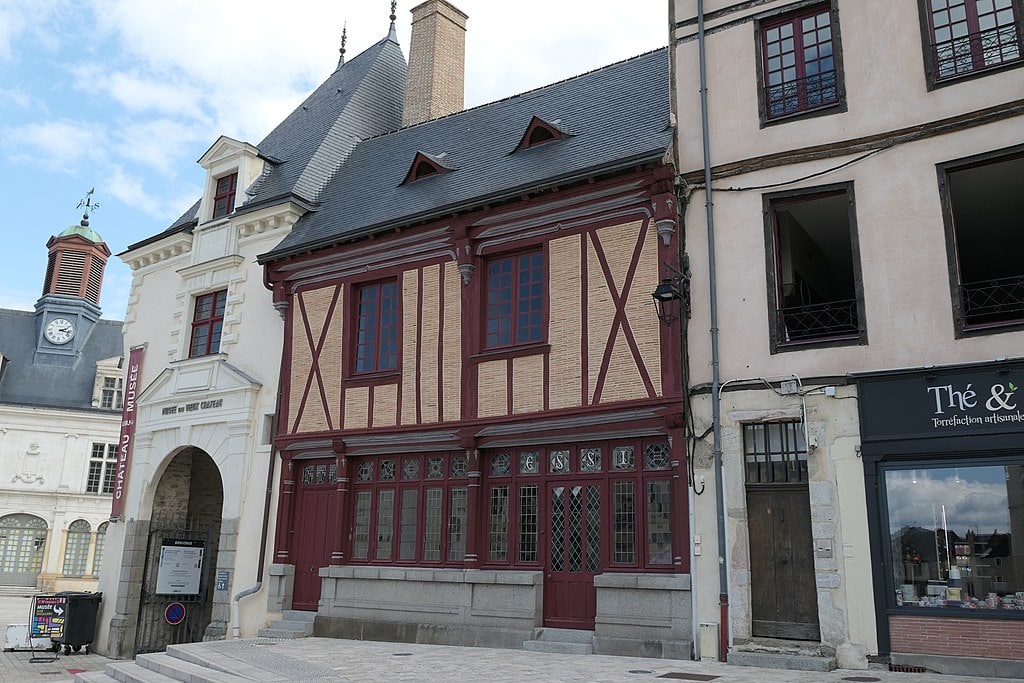
Place de Trémoille in front of the Château Neuf
Place de Trémoille in front of the Château Neuf is a particularly beautiful public square. The lovely 17th-century pavilion stands as a regal entranceway to the old château and right next to it is a half-timbered house from the 1600s with colourful leaded windows. The Maison de Clermont is a half-timbered house built in the second half of the 15th century. Its name comes from its status as a residence for the abbots of Clermont Abbey. The house was been listed as a historic monument in 1926.
Open all year except Monday, Sunday morning and public holidays. Tickets : 3 € Guided tour in English tour includes the chateau to the prison, archaeological collections, and the museum.
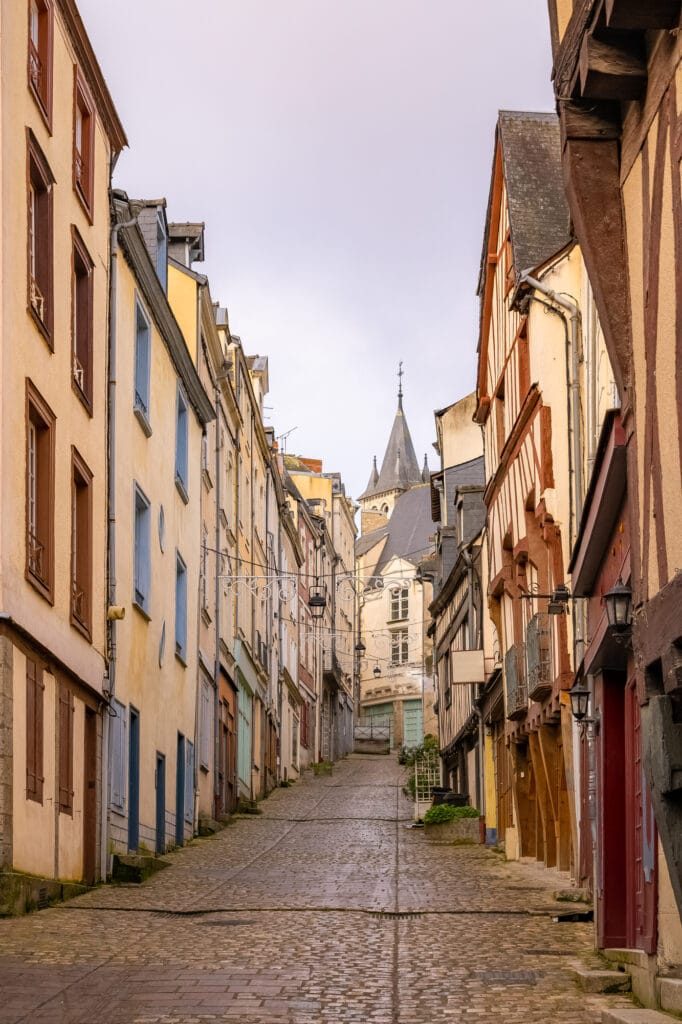
Jardin de la Perrine
Set against the banks of the river, this peaceful park will grant you great views across the city and of the castle. Be sure to see the giant sequoia and rare Chinese Ginko tree as you explore. Henri Rousseau’s tomb and a monument to Alain Gerbault are both set within the park.
Alain Gerbault was born, in Laval, and spent much of his childhood in Dinard. In 1923 he circumnavigated the globe single-handedly.
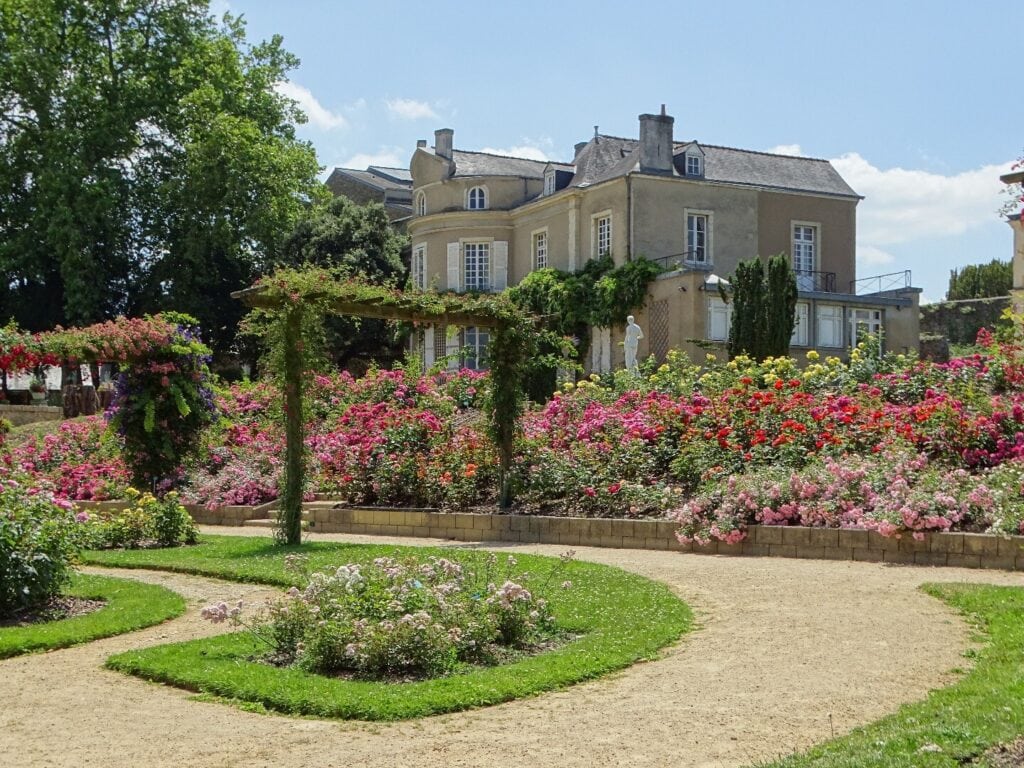
Pont Vieux
Pont Vieux is the arched 13th-century bridge built on the exact site where the Roman road from Le Mans to Corseul once crossed the Mayenne River. Pont Vieux was damaged during the liberation of Laval in 1944 when it was partly blown up by the Germans, but it has been fully restored.
Laval Cathedral
The Laval Cathedral was originally constructed in the 11the century with early Gothic vaulting. The tapestries within the cathedral were woven in the 1600s and show images from the Book of Judith.
The northern part of the cathedral, of the nave, is from the 1500s and designed in Renaissance style, with delicate plasterwork in the ceiling of the dome. Look for the original altar that survived the French revolution.
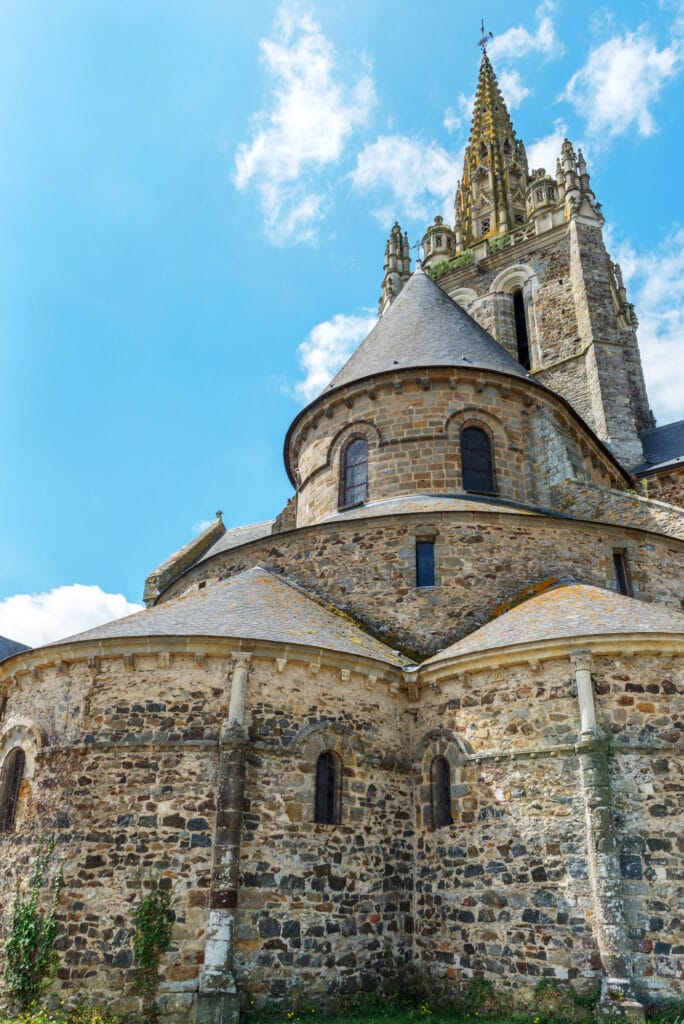
Basilique Notre-Dame d’Avesnières
A place of pilgrimage in the middle ages Our Lady of Avesnières became a basilica in 1898. Some beautiful statues are found within the Basilica: a Holy Virgin and a Christ from the 14th century, a massive St Christopher (16th century), and triptychs from the 15th and 20th centuries. Inside, the columns have fantastic Romanesque and Gothic carvings of mythical animals and leaves.
Attractions outside Laval
If you have time, these places are close by making for a wonderful day trip or afternoon with minimal travel time from Laval.
Thermes d’Entrammes
Just 10km from Laval are these Roman thermal baths. First uncovered in 1987, the area’s Roman settlement was discovered, but it was not until much later that the baths were uncovered during restoration work on the church that was built on top of the baths.
The baths include an 8.5-metre-high Roman wall, a row of four hypocaust-heated bathrooms, brick arches and windows as well as proof of religious activity at the site that includes an ambo, sarcophagus and bell moulds.
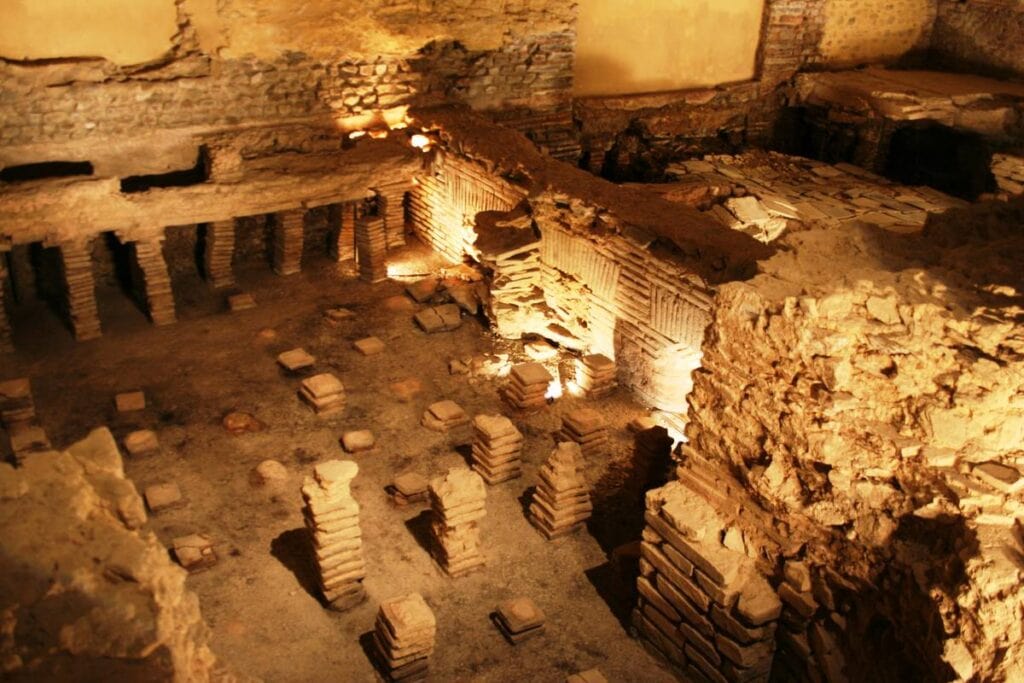
The lovely riverside town of Mayenne
Mayenne was once the gateway to Normandy and the home of the Dukes of Mayenne from the 1500s to the French Revolution. Although not a large city it does contain lovely Mayenne River walks and a small ruined Castle that you can visit.
The town of Mayenne has two distinct parts. To the west of the Mayenne river, the Notre-Dame area is named after the impressive basilica, and to the east of the river, the Saint-Martin area is named after the church.
St-Martin suffered from the heavy bombing at the end of the German occupation during World War II, so the buildings have slightly less character than those on the opposite bank.
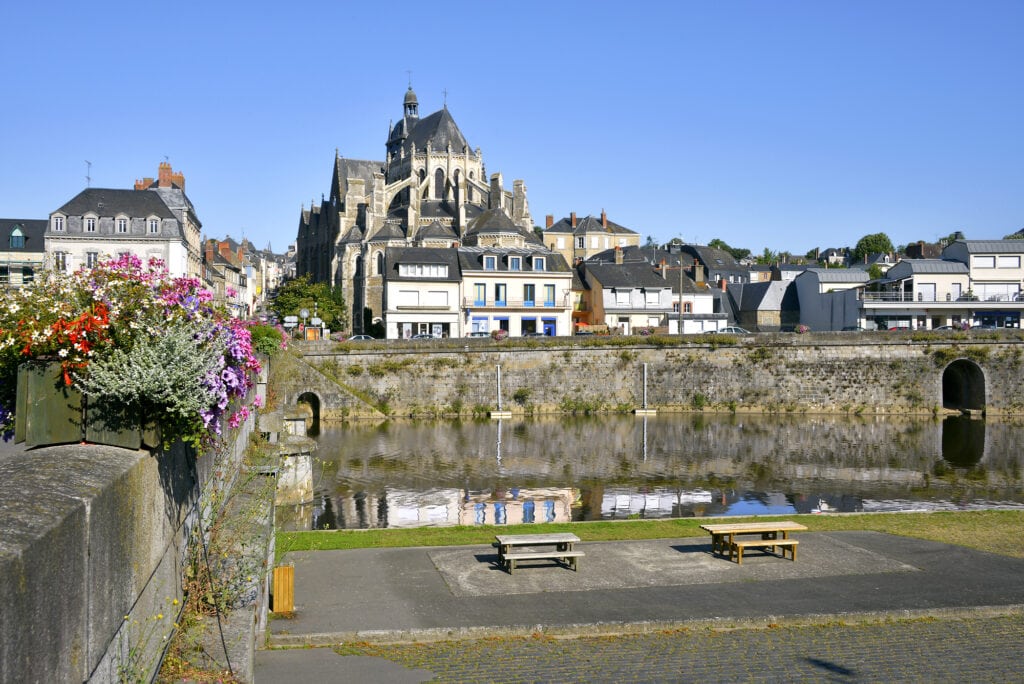
Château de Mayenne
The Mayenne castle and museum is the main attraction in the town. The castle ramparts are the best place for a birds-eye view across the Mayenne rooftops.
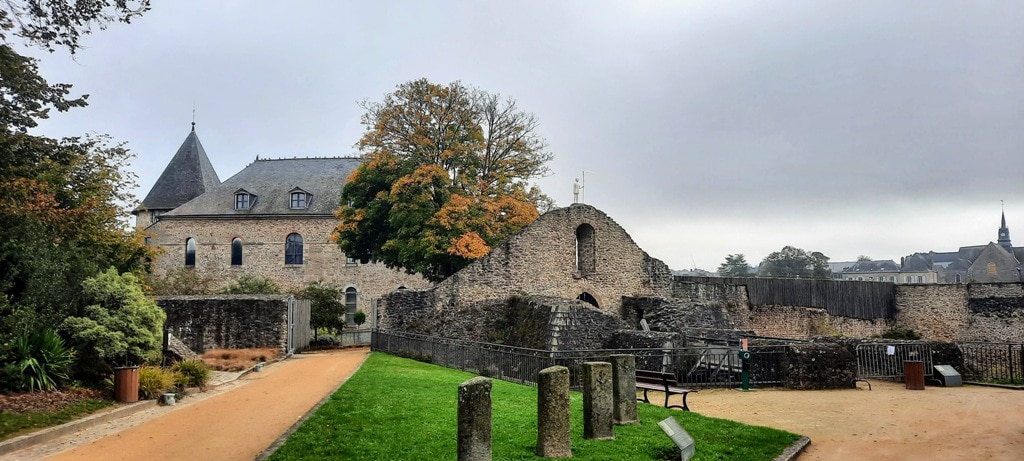
The castle dates back to the 10th-century origins and although it has had many renovations it still mainly is a medieval one. Excavations in the castle have revealed walls and doorways from an even earlier castle, from the Carolingian period of the 8th-9th centuries.
The museum is excellent, a modern-style attraction that fits perfectly within the medieval castle. The majority of the information is translated into English, and the lifts make the whole building accessible for those with reduced mobility.
Riverside walks in Mayenne
If you come to visit Mayenne on a sunny day be sure to find time for a stroll along the river, with pretty views, cross the river and bridge to the castle and basilica. A towpath starts from here that goes all the way to Laval and you can take a boat trip along the River to see the town from a different viewpoint.
The best walk along the river is behind the Campanile Hotel you turn right at the hotel and follow the road to the Beau Rivage hotel where you can start your walk, This is an absolutely gorgeous river walk following the towpath downstream away from the town.
All along the towpath are the old lock-keepers cottages, some of which have been turned into little shops. During the summer months, the locks are manned by volunteers.
Petite Villages of Character and Les plus beaux villages de France in the Mayenne
The Most Beautiful Villages of France is an organization dedicated to promoting the most beautiful places in France. In 1982 the organization was formed to
to preserve and enhance the heritage of its member villages in order to increase their notoriety and thus promote their economic development.
Today, the association has 164 villages spread over 14 regions and 70 departments. There is also the designation of Petite Village of Character. Within the Mayenne, you will find 8 of these designated villages.
Sainte Suzanne – one of the most beautiful villages in France
Sainte Suzanne’s hilltop location provides unbeatable panoramic views of the nearby countryside. Although only a tiny village, it was the only French town capable of resisting attacks by William the Conqueror during his siege from 1083 to 1087.
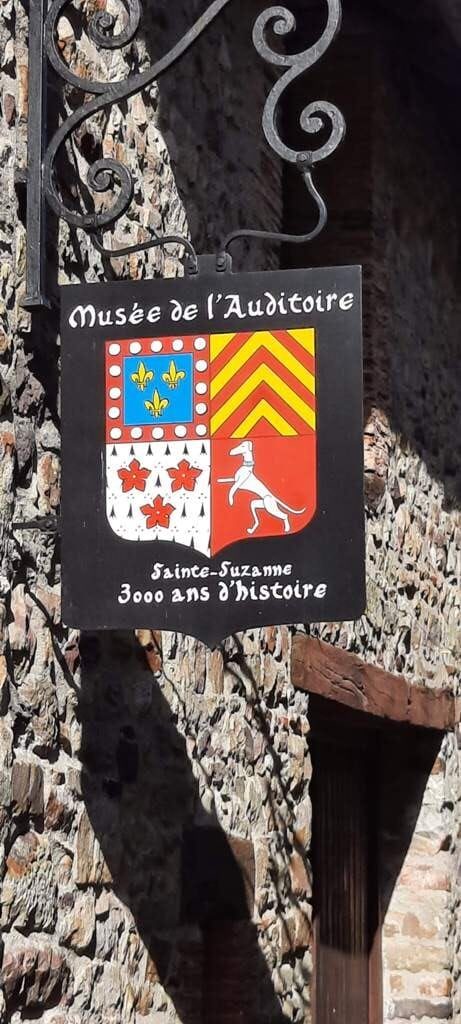
On a neighbouring hill, is the Camp de Beugy, where William the Conqueror’s forces set up for their unsuccessful siege of the town which you can visit for free as well as the castle keep and ramparts.
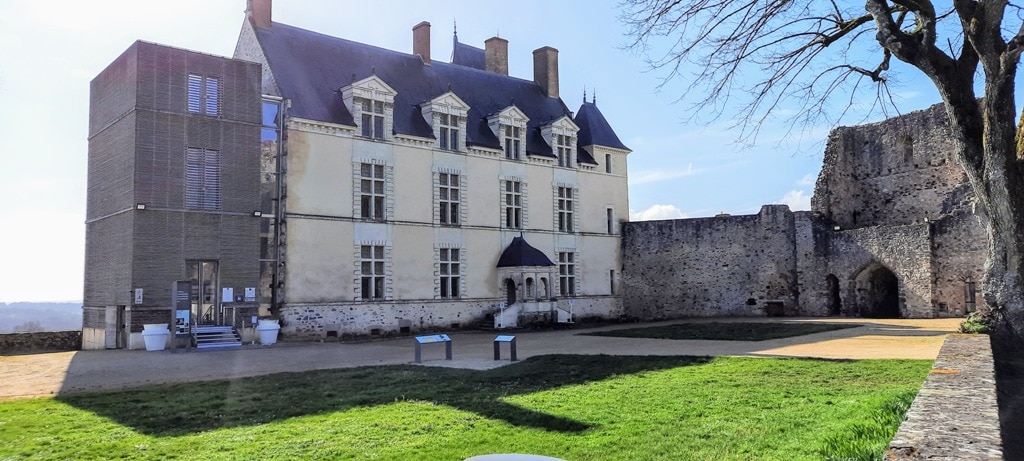
Lassay les Chateaux – Petites Cités de Caractère
Lassay-les-Chateaux gets its name from the three medieval castles within its borders. The perfectly preserved Lassay Castle was built in the 14th century and is linked to the ruined Bois-Thibault castle and the Bois Frou chateaux through an interpretive trail that follows the legend of Sir Lancelot.
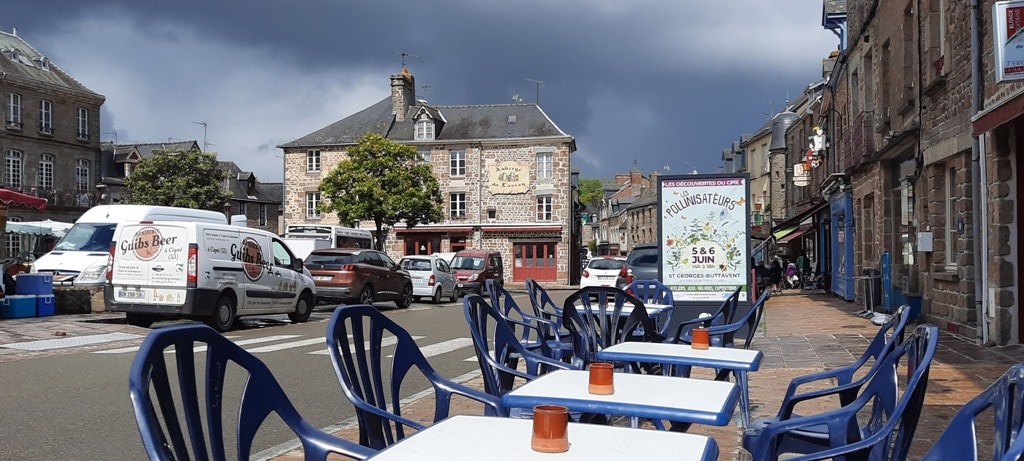
The medieval village of Lassay-les-Chateaux to the northeast of Mayenne on the borders of Normandy and Brittany. The village has 3 castles, two are ruins and one you can tour. There is also a Medieval Garden, an ancient Rose Garden near the old convent and several other interesting historic buildings and memorials.
Lassay Chateau
Behind the Medieval garden, you will see the Castle which you can walk down by the lake and along the back of the castle. You walk up to the castle entry and can take a guided tour of this magnificent medieval fortress. Unlike most castles of this age which over the centuries have been abandoned, demolished or transformed into private residences, the castle of Lassay has survived with few major alterations.
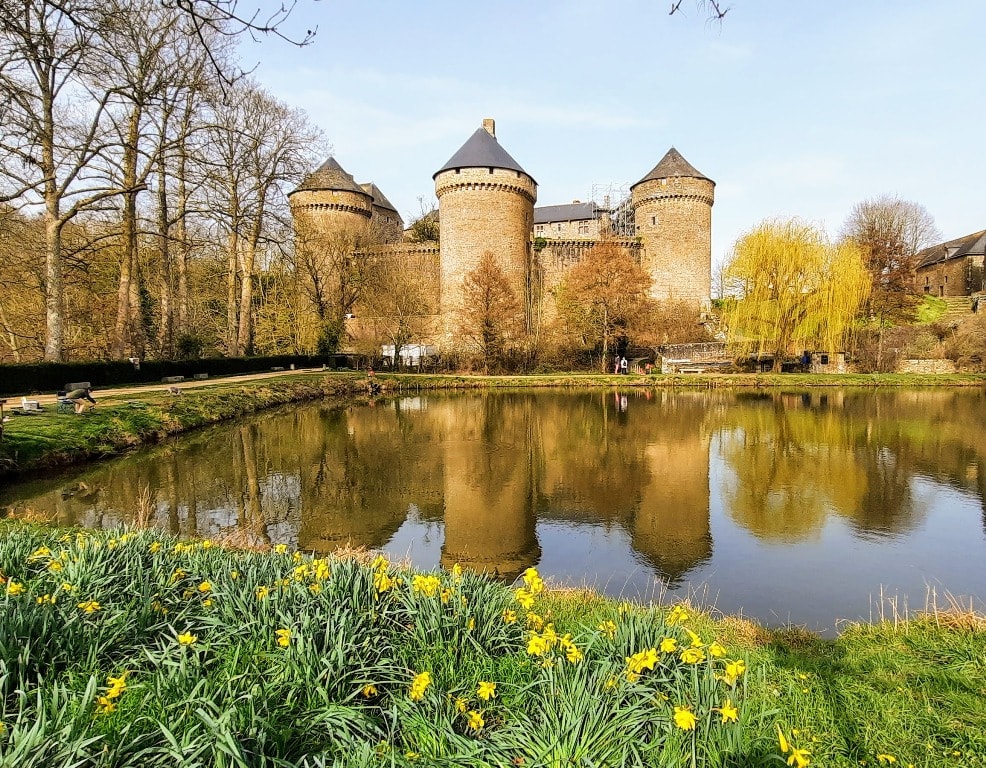
The Castle is a rare example of 15th-century military architecture and its history includes being a military stronghold that straddles the three provinces of Normandy, Brittany and the Mayenne. The castle was besieged during the English invasions of the 15th century, the wars against Brittany and the religious wars of the 16th century. By the end of the 17th century, it became home to the Montalembert family and is open for tours during the summer months. Ticket Prices are 7€ for adults
Rose Garden of Lassay
The rose garden is located in the old meadow of the Benedictine Convent and contains two gardens. The first garden is French style with a long wooden pergola the walk through the pergola allows you to pass through the history of roses from the antique and Middle Ages to the most modern of new roses. If you love your roses you will be thrilled to see and smell Bourbon, Tea and English roses along with some glorious climbing roses. There is no entry fee.
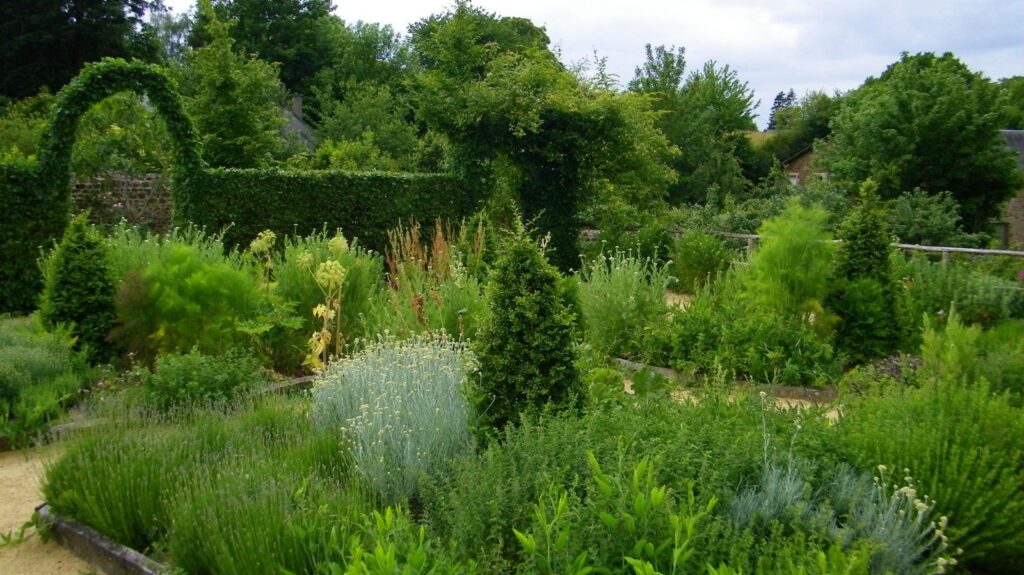
Medieval Garden
The Garden contains four-walled sections including the Green Carpet with its perennials, the herb Garden with huge rosemary plants and other medieval herbs, the Orchard and the Grove with fruit trees, and perennial flowers and roses. No entry fee and open all year round.
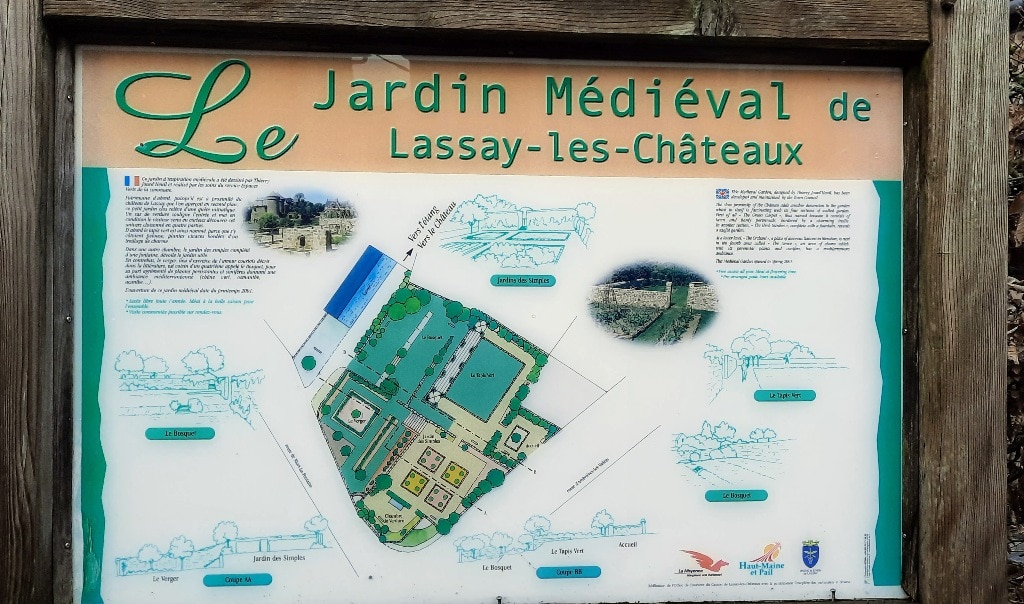
Saulges
South of Sainte Suzanne you can visit the small village of Saulges which is another ‘little city of character’. Saulges is home to the only caves north of the Loire that are decorated with rock paintings.
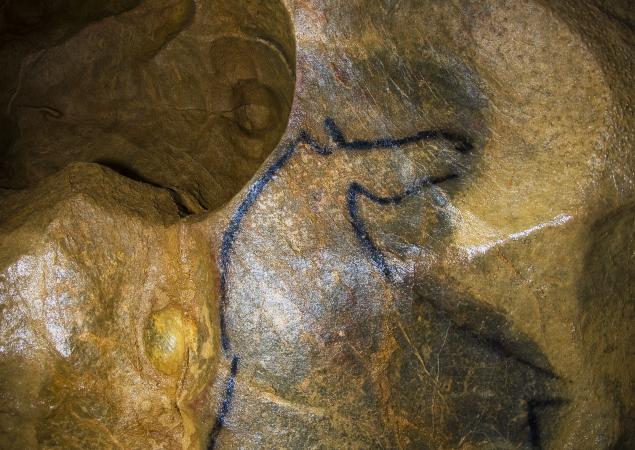
Caves of Saulges
The caves of Rochefort and Margot bear the marks of human habitation from over 300,000 years ago. The brand new Prehistory Museum brings them to life with its displays and virtual reality exhibits.
St Peter’s Church
A Gallo-Roman cemetery once stood where the village stands today. It was still in use when Saint Peter’s church was built, one of the few surviving from this period (8th century). The old church ruins stand next to the Romanesque church (11th century. The Church of Saint-Pierre in the centre of the village dates in part from the 8th century, making it one of the oldest churches in the region.
Access to the older church is through a 16th-century chapel and really is not to be missed. Inside the lovely interior are lots of painted statues of saints traditionally venerated during pilgrimages. There is a painted statue of Saint-Cenere and a decorative box containing the relics of the saint and a painted altarpiece.
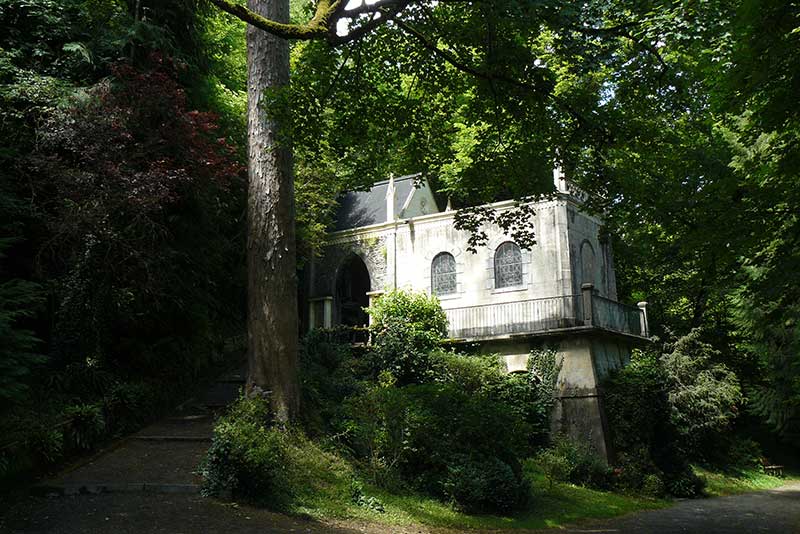
Inside the 16th century chapel, there is a fine wall painting dating from soon after the chapel was built but only rediscovered in 1960 and restored in 2011.
Church of Notre-Dame
The Church of Notre Dame dates from the 11th century, is in the Roman style and is well known for its ancient altarpieces. It is also noteworthy for its large bell tower. Inside there is a 15th-century statue of the Holy Trinity and a statue of Saint Louis.
Chailland
On the banks of the Ernée River sits a picturesque village called Chailland a “Petite Cité de Caractère”.
Chailland was an industrial centre for three centuries. From the village, a lovely road leads to the former site of the forges. The spectacular setting of Chailland is nestled in the Ernée Valley and lined with magnificent rocky escarpments. Chailland is a true industrial remanant. The wash houses and the mills tell of their daily life.
Take a walk or rather a climb to the terraced gardens and up to the Virgin on the Rock to see some incredible views.
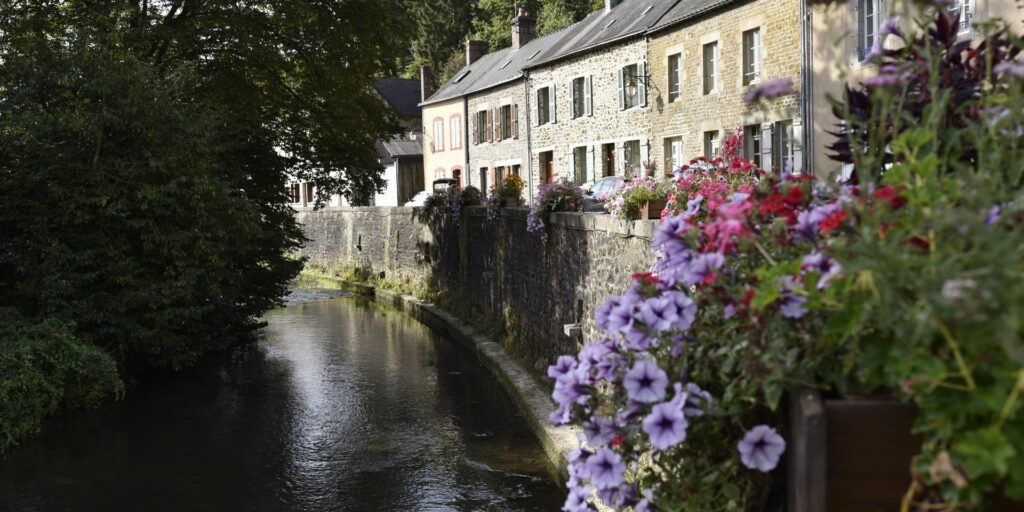
The Gardens of Clivoy
Nestling in the Ernée valley, very close to Chailland, the park and garden of the Château de Clivoy which is classed as a “Remarkable Garden” can be visited from May to September.
There are 6 hectares of English-style parks and gardens including a vegetable garden with greenhouse, pond, orangery, superb rose gardens and the rocky ramparts of the old military post.
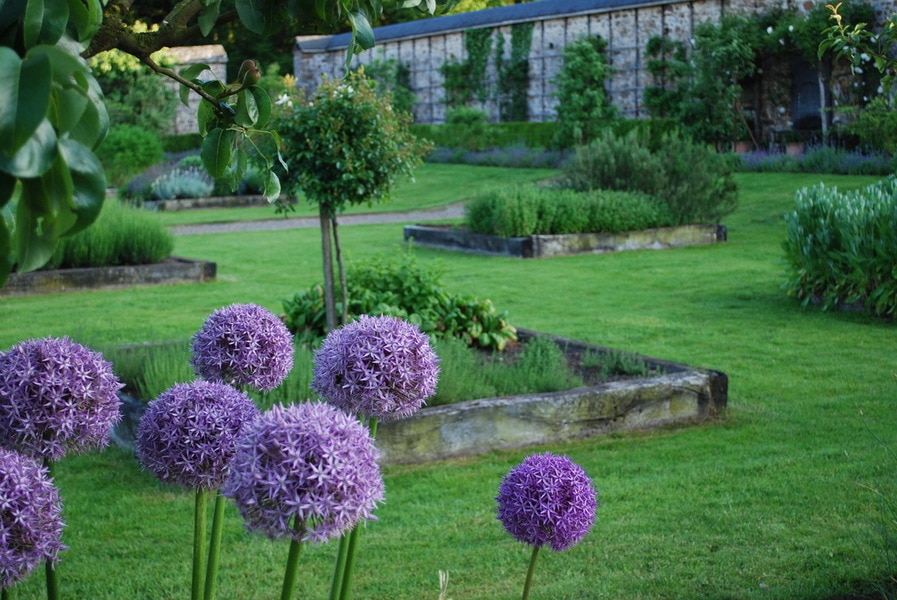
Saint-Pierre-sur-Erve
For centuries, Saint-Pierre-sur-Erve was a stopover on an important Gallo-Roman road and the medieval road which followed it. This lovely Petite City of Character features a charming medieval pedestrian bridge near which you will spot the old ford and the village washhouses.
At the top of a hill just outside the village is a chapel with a superb panorama over the hills of Coëvrons and Sainte-Suzanne. You can also follow the signs to an ancient dolmen.
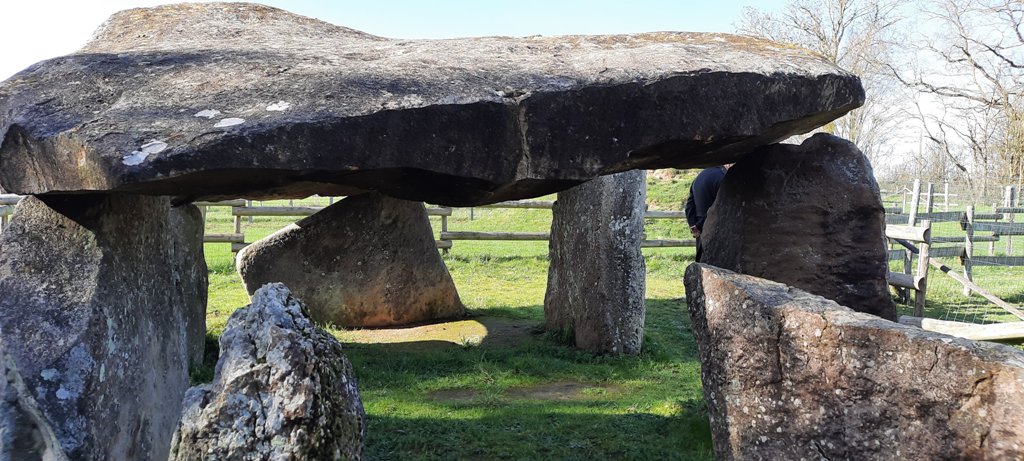
Parné‑sur‑Roc
The village of Parné-sur-Roc is another “Petite Cité de Caractère,” The name of the town comes from the name of the owner of a Gallo-Roman villa (vast agricultural estate): Patriniascus. The latter was spotted by aerial survey in 1976. At the beginning of Christianity, the first chapel was erected on the estate. This would mark the origin of the church of Parné.
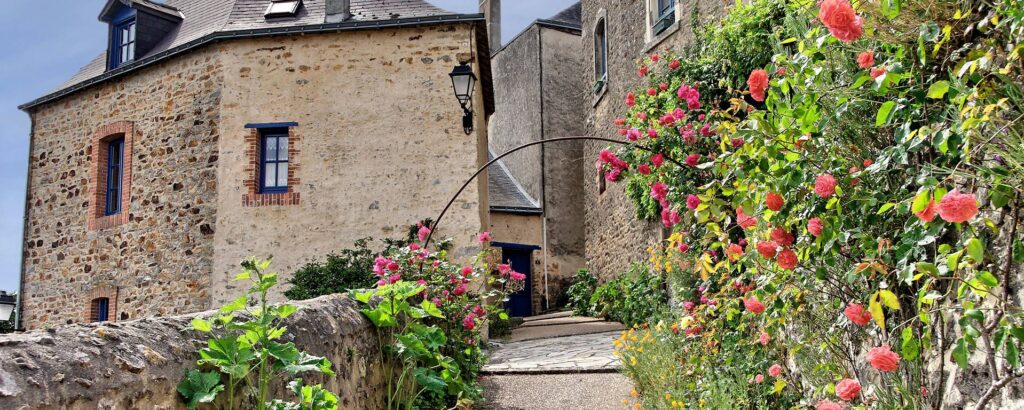
The Church has a very imposing 12th-century bell tower covered in stone which is rare and it has the only Romanesque bell tower in Mayenne.
Within the Church, you will see murals discovered in 1950 which date from the 16th century. They include the Virgin Mary pierced with 7 swords (Our Lady of the 7 Sorrow along with several other wall paintings.
The village itself has a fine collection of medieval, Renaissance and 19th-century homes. Each building is different and you can spot the staircase tower of the medieval houses, a house with two turrets, the half-timbering of the Croix-Blanche, and decorative finishes on the Maison du Frippier.
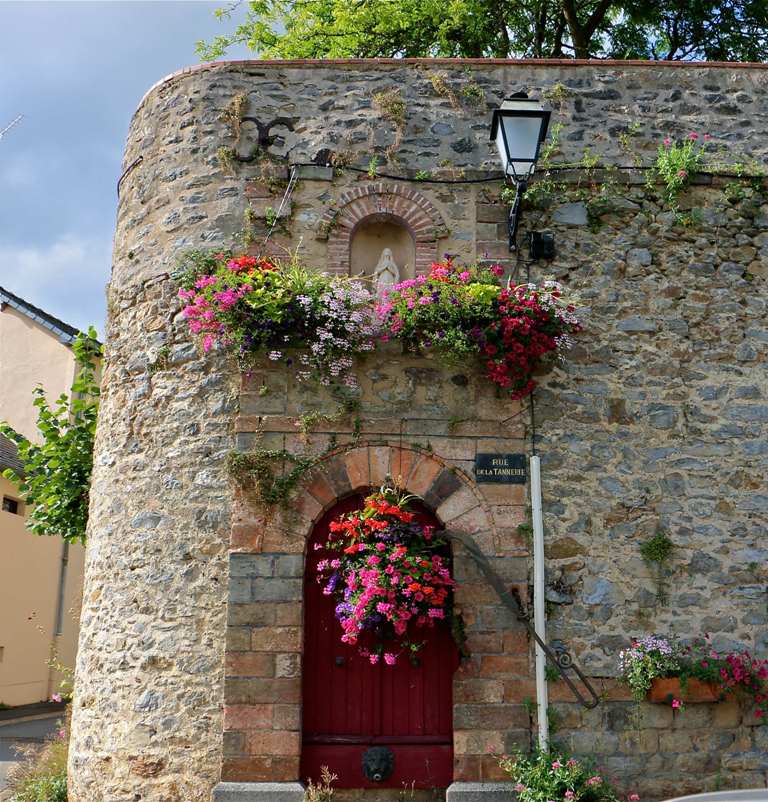
If you walk down rue aux Chèvres to the bottom, you will see 19th-century lime kilns as well as six workers’ houses next to them. Head down to the medieval bridge which spans the Ouette River to appreciate the views.
Fontaine-Daniel – Petites Cités de Caractère de France
The village of Fontaine-Daniel was built around the founding of the Cistercian Abbey and it became the centre of the textile industry in the region. Founded in 1205, the abbey became the property of Pierre Horem in 1806, who created a spinning mill there, employing up to 500 people. Today the Toiles de Mayenne based in the village has stores all over France.
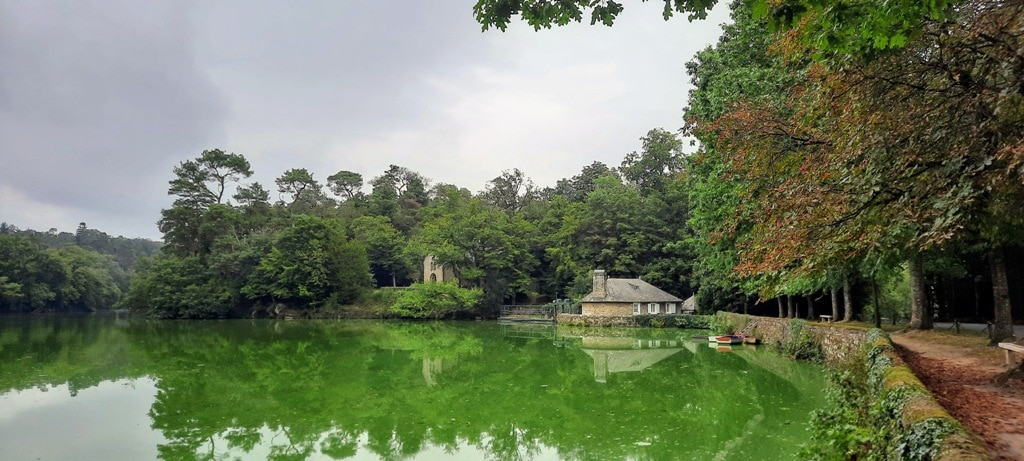
The monks built an abbey, outbuildings, a chapel-gatehouse, the “La Forge” building located on the village square, and the mill. They also created a pond, and dam that ran the mills and the pond fed them fish.
In the 19th and 20th centuries, the development of spinning, weaving and dyeing activities required the building of a village made up of collective buildings built from a humanist perspective and including semi-detached houses, and collective places for the working community: a school, a chapel a village hall, a laundry and at the Co-op store in the village you can obtain information on walking tours around the area.
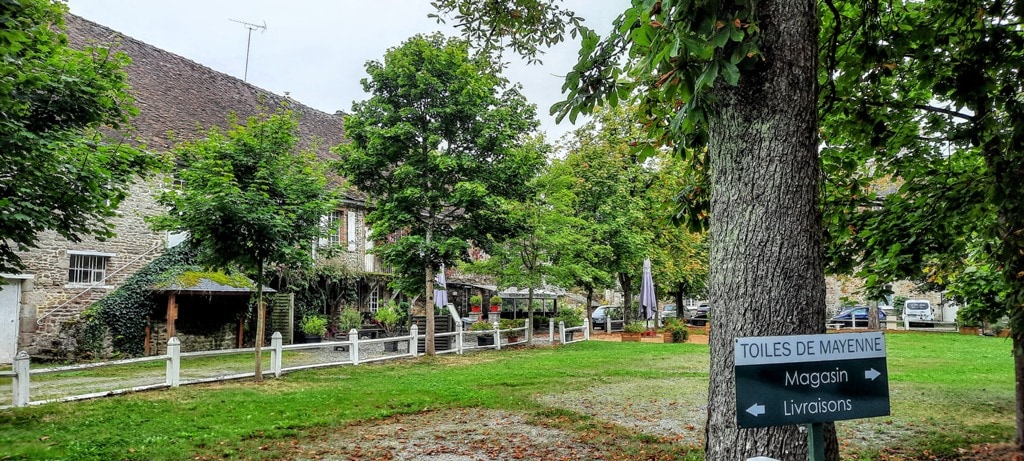
Jublains
Jublains is an interesting site to visit and can be found just southeast of Mayenne. This is an ancient Roman site with the remains of a fortress, temple and Roman theatre. There is a museum on-site where you can see the artefacts found on the site.
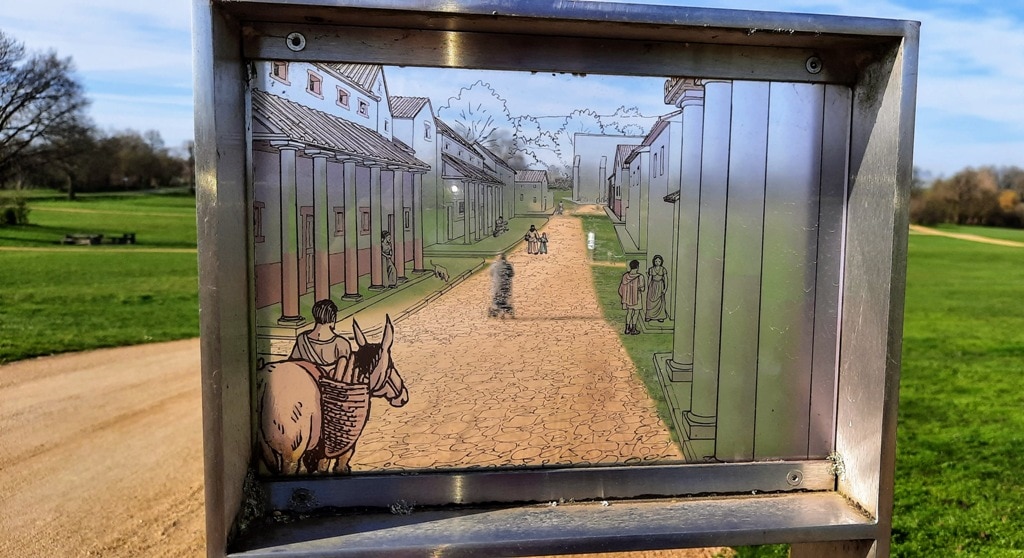
Fougères
This little town on the Mayenne-Brittany-Normandy border also has a lovely medieval district and a lively Saturday-morning market
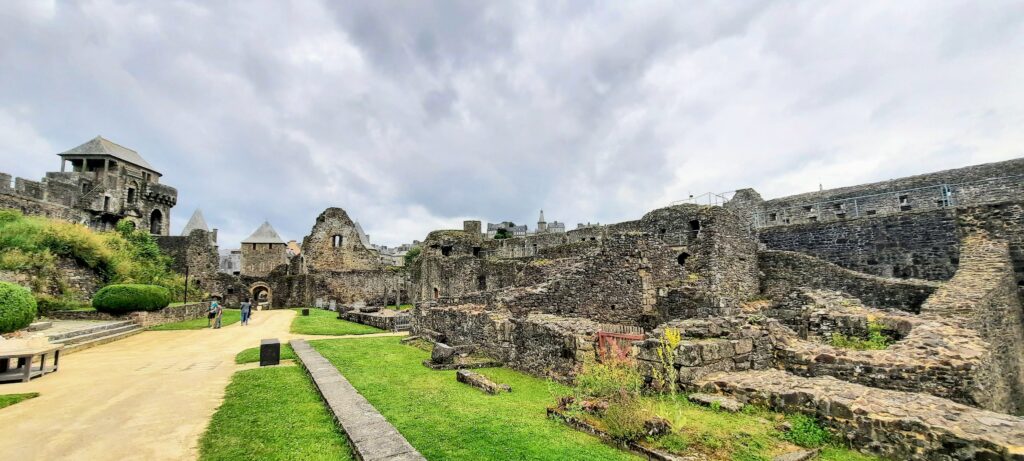
You shouldn’t miss visiting Fougères to see its magnificent castle which is one of the finest fortresses in Europe. The current castle dates from the 12th century and consists of three enclosures whose walls are dotted with towers. As you walk around the castle its history is brought to life using a digital audio guide.
Pontmain
Pontmain is a small village that is home to a basilica and a miracle. The miracle was a vision of a great lady with a smiling face seen by 4 children from the village. The children became known as the Little Seers. The children were all under the age of 13 and they saw this apparition in January of 1871. In 1872 the Church declared it official and the basilica was started.
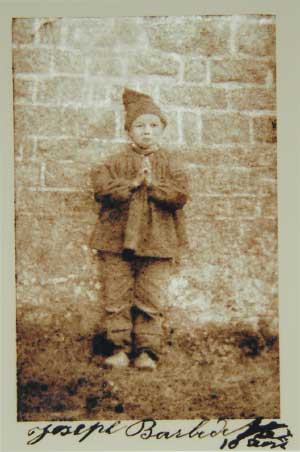
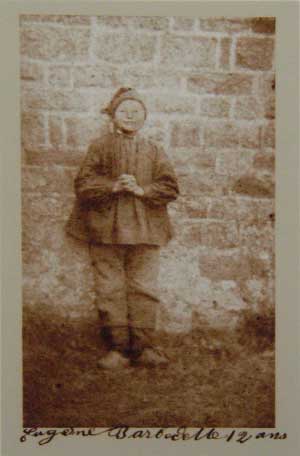
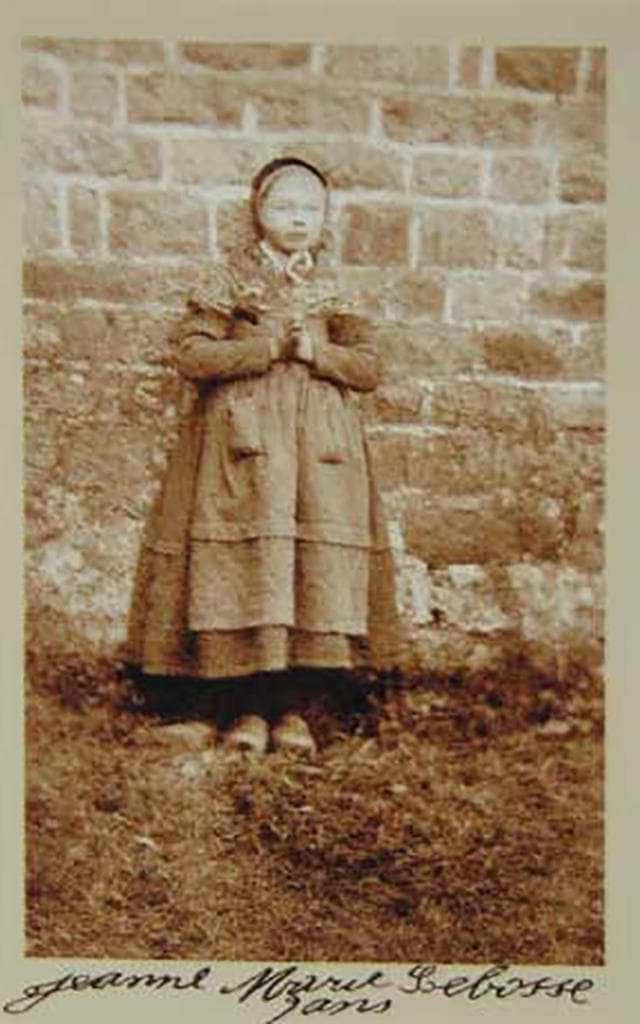
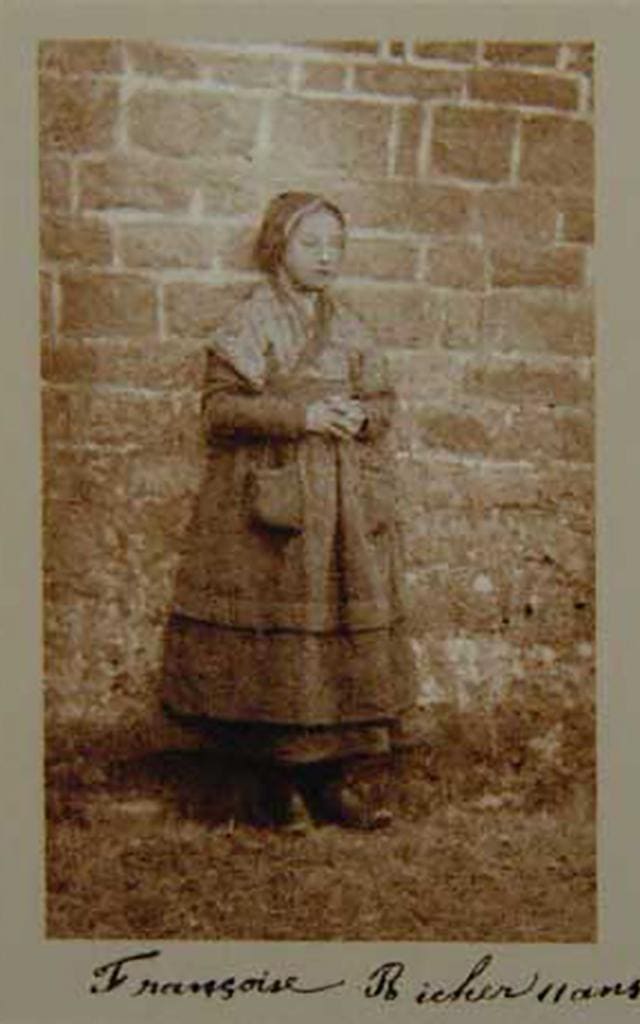
Every year the village attracts thousands of pilgrims and tourists. The basilica, which was built in a few years, is luminous thanks to its large stained-glass windows.
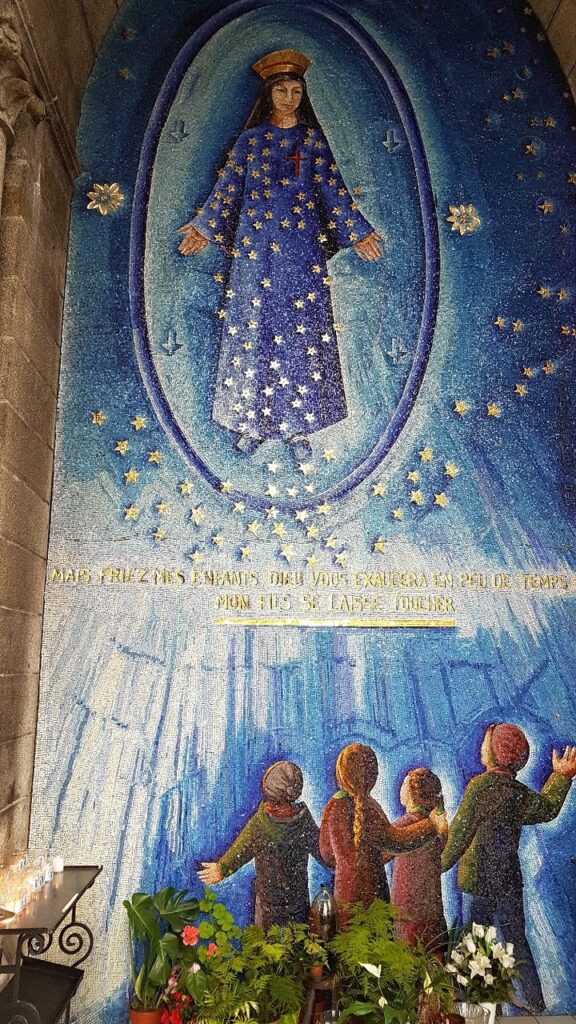
Evron
Evron is a small town and is famous for its Chapel of Notre Dame de L’epine. The Chapel was founded in the 7th century and the crypt is over 1000 years old. An important place of pilgrimage the Chapel has been built over hundreds of years and now stands as a Romanesque and Goth style masterpiece. Inside you will find 13th-century wall paintings and Aubusson tapestries.
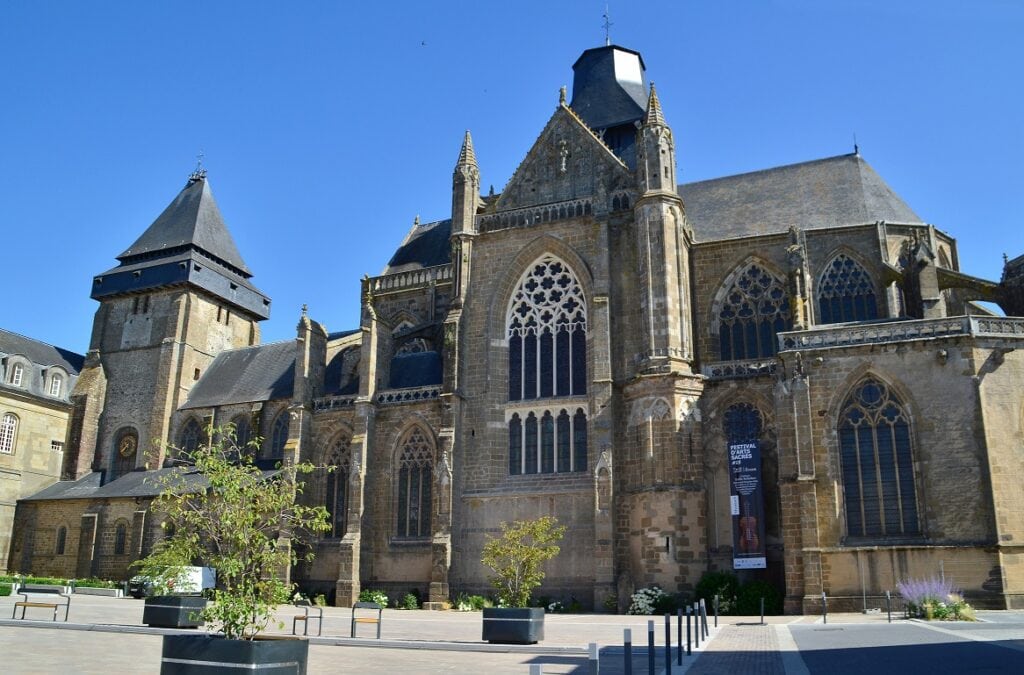
Vitre
Vitré was once one of the region’s most important towns and is considered the gateway to Brittany as it sits on the border of the Mayenne, Normandy and Brittany. It’s a beautiful town with medieval buildings and a fairytale castle.
Sitting atop a rocky spur, Vitré castle dominates the surrounding countryside. Built in the 11th century and then rebuilt in the 13th, 14th and 15th centuries, it is a reminder of the town’s defensive role in the border region of Brittany. The outstanding centre-Ville contains many half-timbered houses with elaborate porches built by those who benefited from the cloth trade the city was known for.
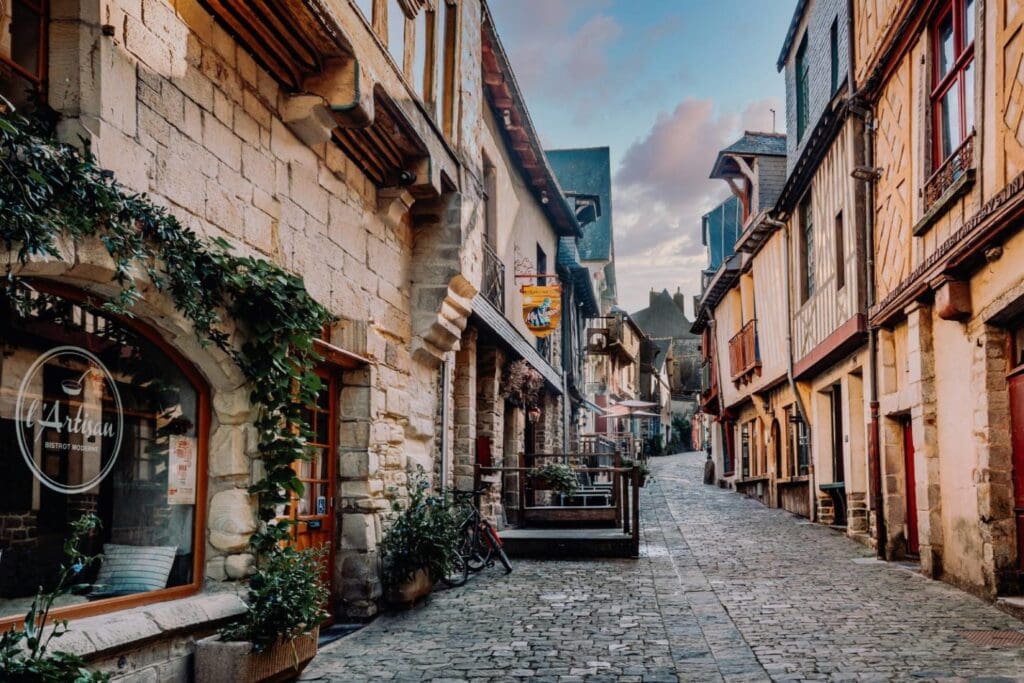
Vitre’s castle is a fine example of medieval military architecture and is now the town hall and a museum. Vitré Castle overlooks the Vilaine River and the city’s historic centre. It is one of the city’s most important monuments and was classified as a Historic Monument in 1872.
The Benedictine priory stands beside the founded in 1138 the buildings now house the House of World Cultures. There are two gardens to see the Benedictine Garden is an exterior garden overlooking the Vilaine River. Within the Priory, you will find the Cloister garden which is surrounded by five arches.

Chateau des Rochers
The Château des Rochers stands in the middle of a vast wooded park and belonged to the Sevigne family since 1410. Madame de Sévigné (1626–1696) who was famous for her letters written during the reign of Louis XIV, discovered this Gothic-style medieval mansion in 1644, the year she was married. She immediately fell in love with it. During her many stays there, she wrote 294 letters, mainly to her daughter, the Countess of Grignan.
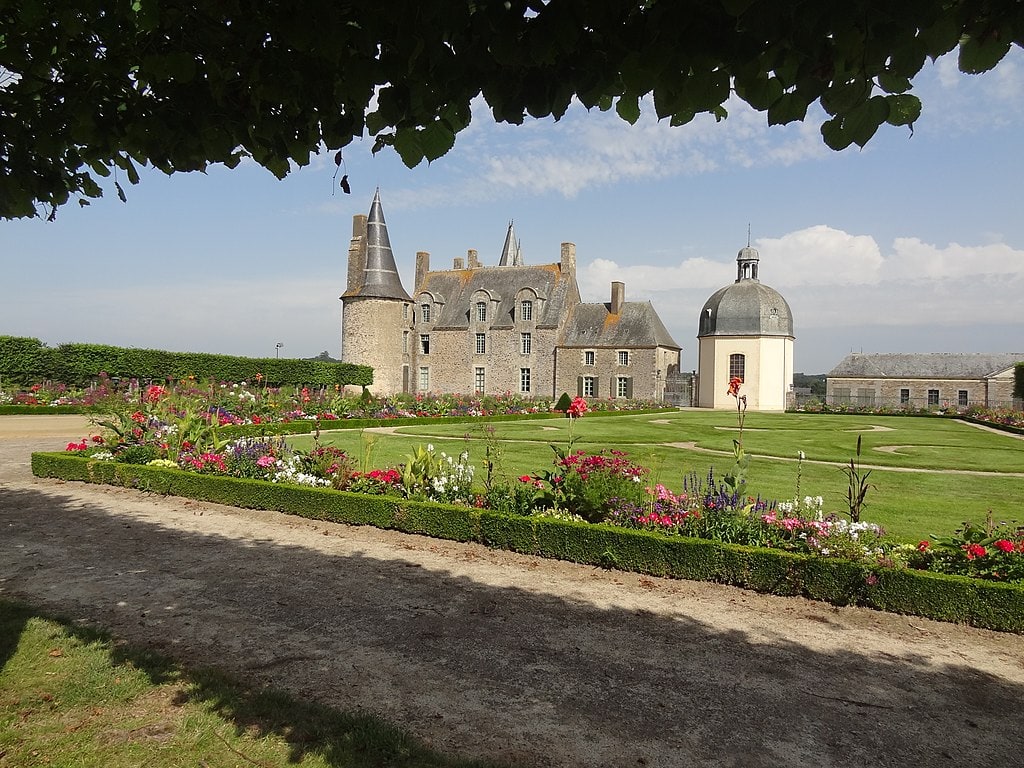
The Rochers Sévigné Museum
You enter the museum through the former orangery, an elegant building from the 1690s. There is a beautiful statue of Madame de Ségivné, in the entryway and numerous portraits of her tell the story of her life. You can walk through the stunning French-style garden created in 1690 by landscape architect André Le Nôtre. After a guided tour of the chapel built in 1671, you’ll enter the tower, where two rooms contain items the writer treasured. Portraits of her loved ones, her own portrait, her personal care items and writing things are displayed as they would have been in her day.
Mayenne attractions
Saint Loup du Gast – Velo Track
If you love a bike ride then cycling in a special ‘Velo’ along the old railway track at the village of Saint-Loup du Gast is for you. This is 6 kilometres (round trip) that takes you through the Mayenne countryside and over the river on the Rosserie viaduct.
The Musée Robert Tatin
Robert Tatin was a French artist and outside architect. In 1962, when he was 60 years old, he bought an old house near Cossé-le-Vivien and for the next 21 years along with his wife, Lise, he created a garden full of his unique sculptures and paintings.
Tatin took inspiration from worldwide cultures and ancient civilizations to build incredible sculptures and monuments from coloured cement.
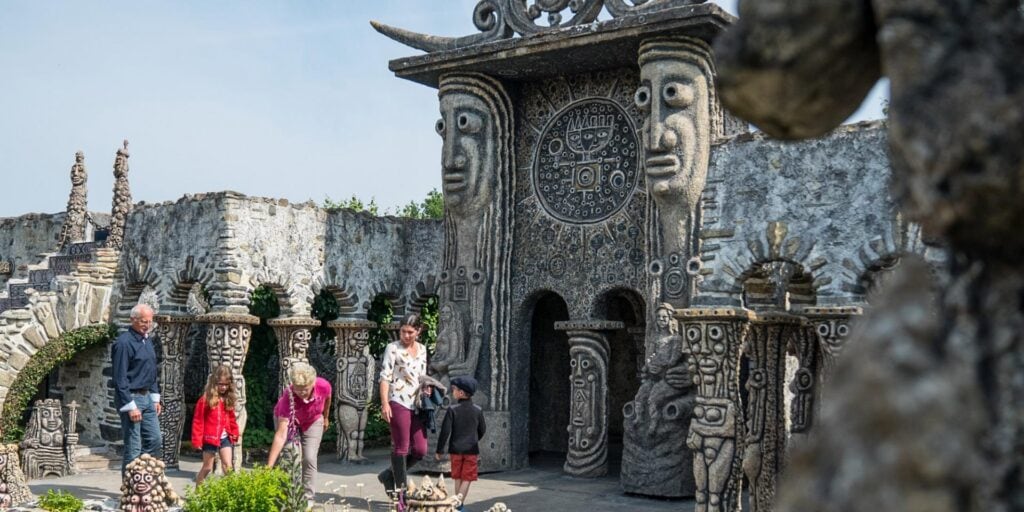
Mill of Thevalles
In the valley of the River Erve, you will find the Moulin de Thévalles an incredible watermill. For 10 centuries, three watermills succeeded each other on the same site. The first one, probably built around the 10th century at the time the first mills appeared on the Erve is mentioned as early as 1260. Built by the Seigneurs of Thevalles it fits into the defence plans of the castle, thus ensuring the survival of the population in case of siege.
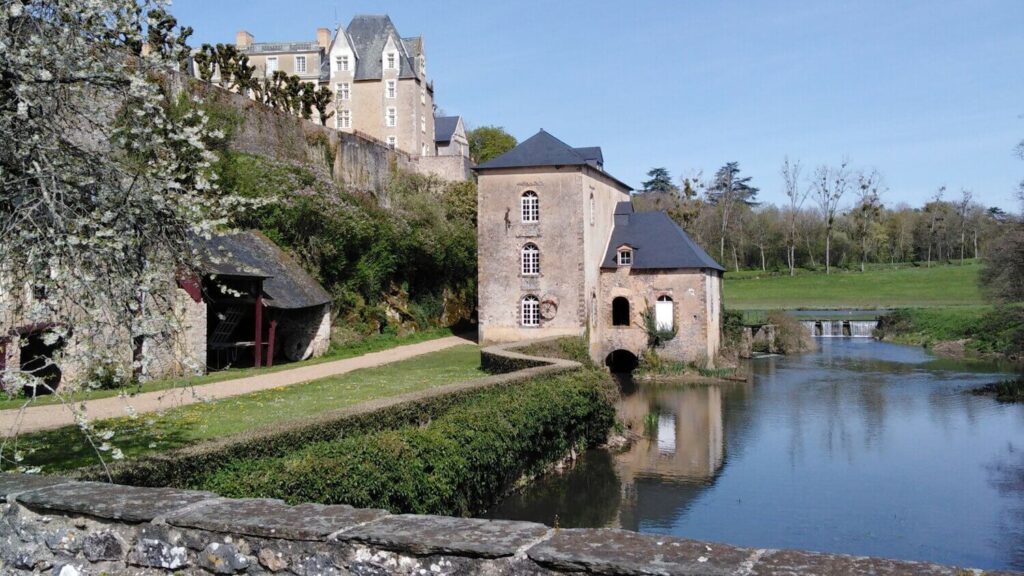
you can tour the mill for €5 euros and see a demonstration by costumed guides who show you the work of 19th-century millers. Over four levels of gears, shafts and antique equipment are demonstrated by costumed guides.
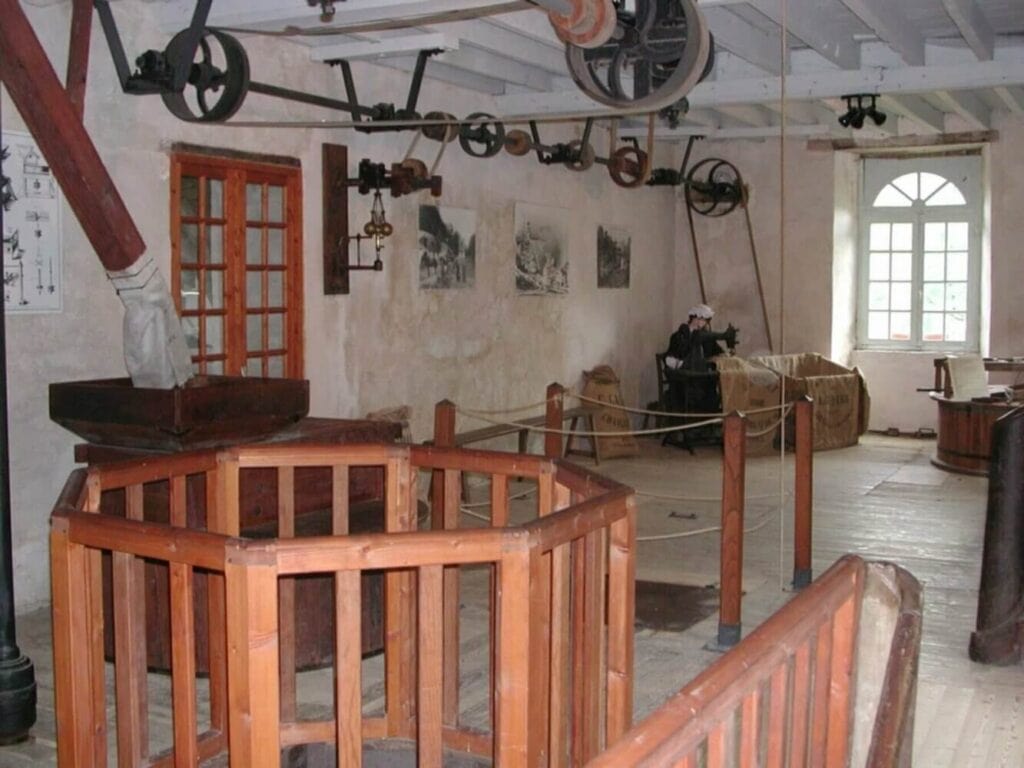
Gardens and Chateaux to visit in Mayenne
Garden of Renaudies
Between Brittany and Normandy, in Colombiers du Plessis, this English style floral series of gardens contain 21 ‘rooms’ or special gardens. Rhododendrons, azaleas, hydrangeas, roses, perennials and foliage including rare species will enchant anyone who loves a garden. You can also visit the Ecomuseum and its old 19th-century farm.
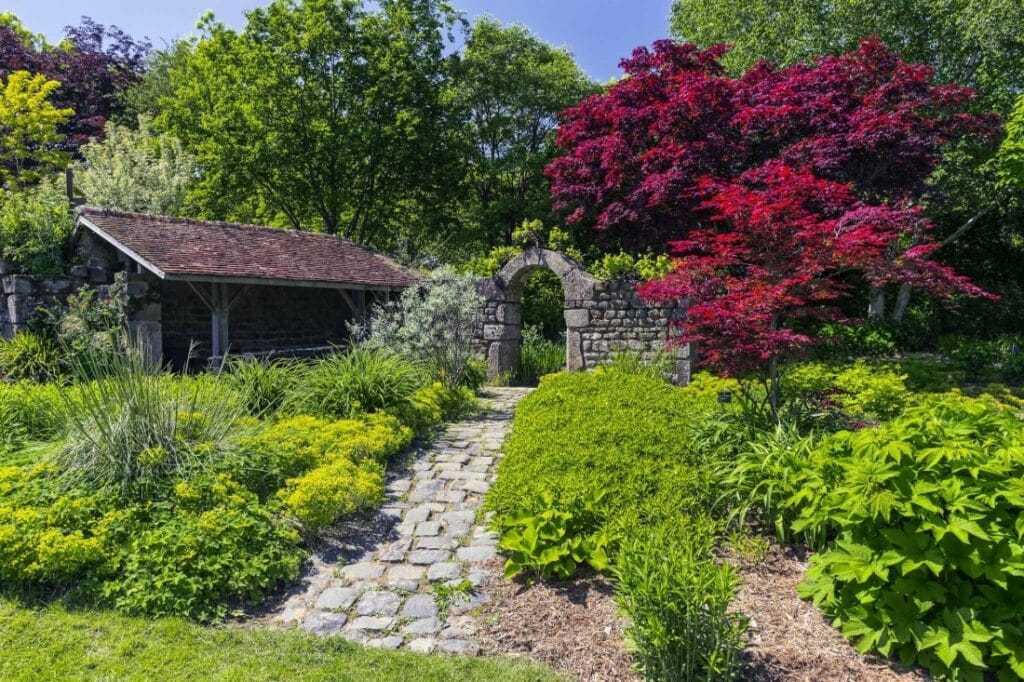
The garden of La Pellerine
Between Ernée and Fougères, this beautiful garden, with rare plants, enhances a charming 17th-century residence. The succession of small, intimate gardens laid out around the grounds covers 2.5 hectares, where you will discover colourful combinations of perennials, old roses and rare shrubs.
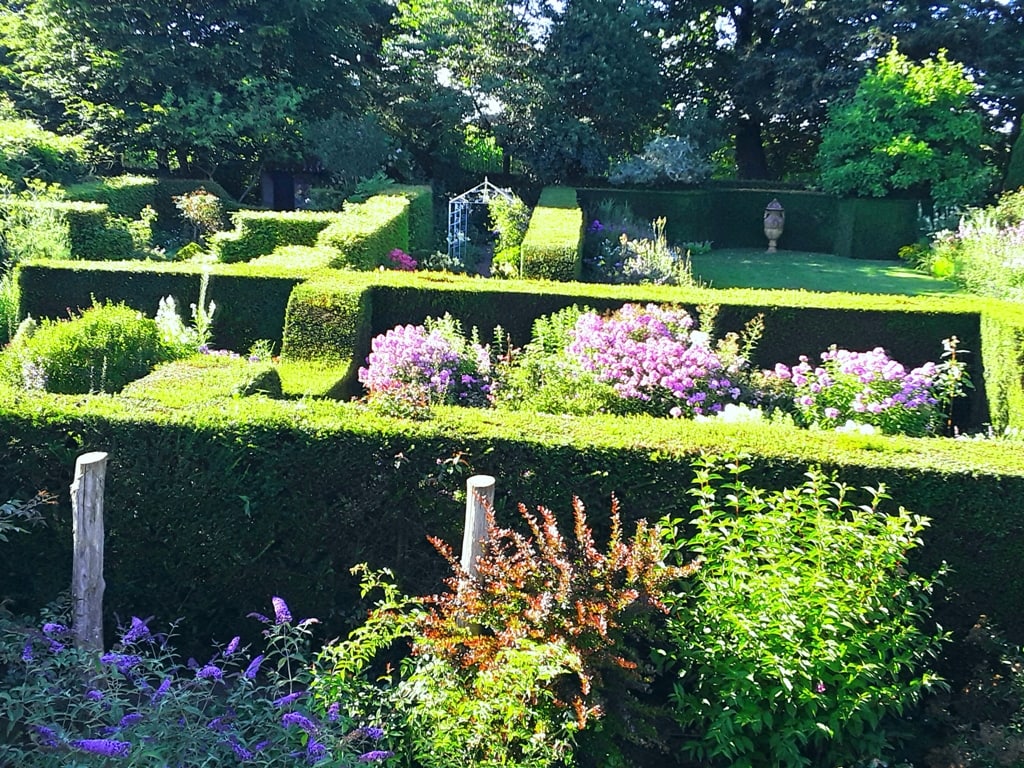
Château et parc de Craon – Le Petit Versailles de la Mayenne
Nicknamed the little Versailles of Mayenne, the castle of Craon stands on the hill of Guinefol the chateaux is built in the classic style of the 18th century. The setting is 47 hectares of gardens with lakes, ponds and a river.
You can walk along four kilometres of paths lined with hundred-year-old trees and more than 150 plant species, and discover the swan basin, a laundry, dovecote, and a small boxwood garden. The old vegetable garden with its greenhouses and orangery was restored in 1992 by Count Louis de Guébriant.
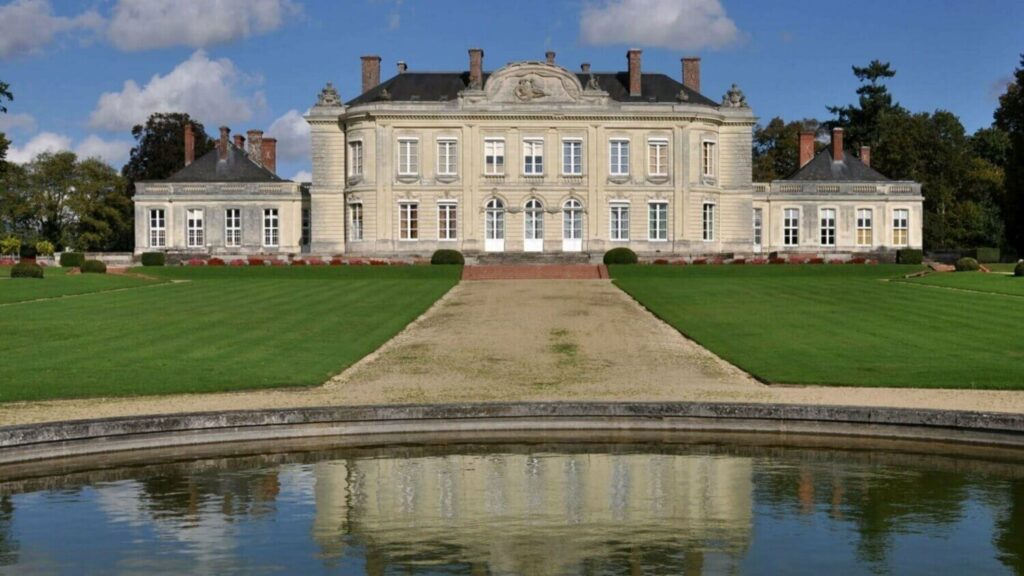
In summer the ground floor of the castle can be visited with a guide who will tell you the secrets of the castle. A Park visit costs €5 per adult and €3.50 per child (6-12 years old) and a tour of the castle: 10€ per adult and 8€ per child – with a game booklet and loan of costumes.
Gardens and castle of Les Arcis
The Chateau des Arcis and its grounds date from the very end of the 16th century. Since 2007, a major restoration campaign has been launched on both the gardens and the buildings.
You can walk around the gardens of Les Arcis and see the exterior of the Chateau and its keep surrounded by moats, with a large park: pond, labyrinth, rose garden, pleasure garden.
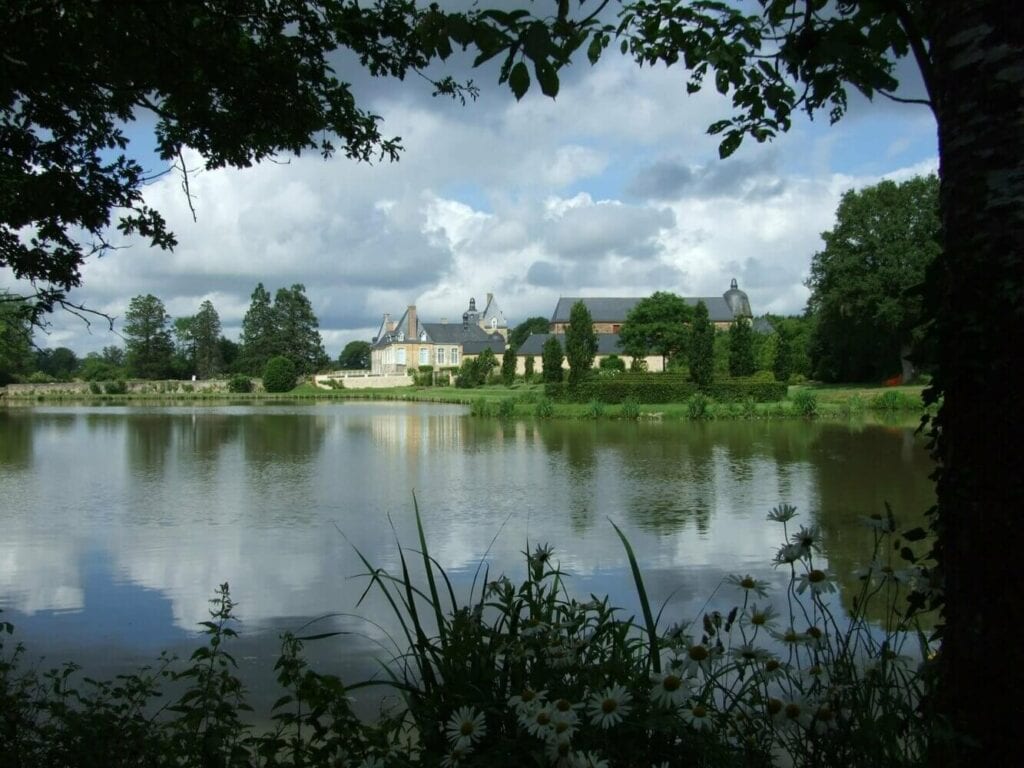
The gardens and exteriors of the Château open to visitors in 2022 on Fridays, Saturdays, Sundays, Mondays and Wednesdays from 10 a.m. to 12:30 p.m. and from 2 p.m. to 6 p.m. from April 29 to September 30.
Château de Bourgon
Built by the Couesmes family, the castle dates from the Hundred Years War: from the 13th century, an impressive stone bridge with three arches remains that spans the moat and the remains of a drawbridge flanked by two massive towers. One of them serves as the foundation for the chapel erected in 1528 by the Montecler family.
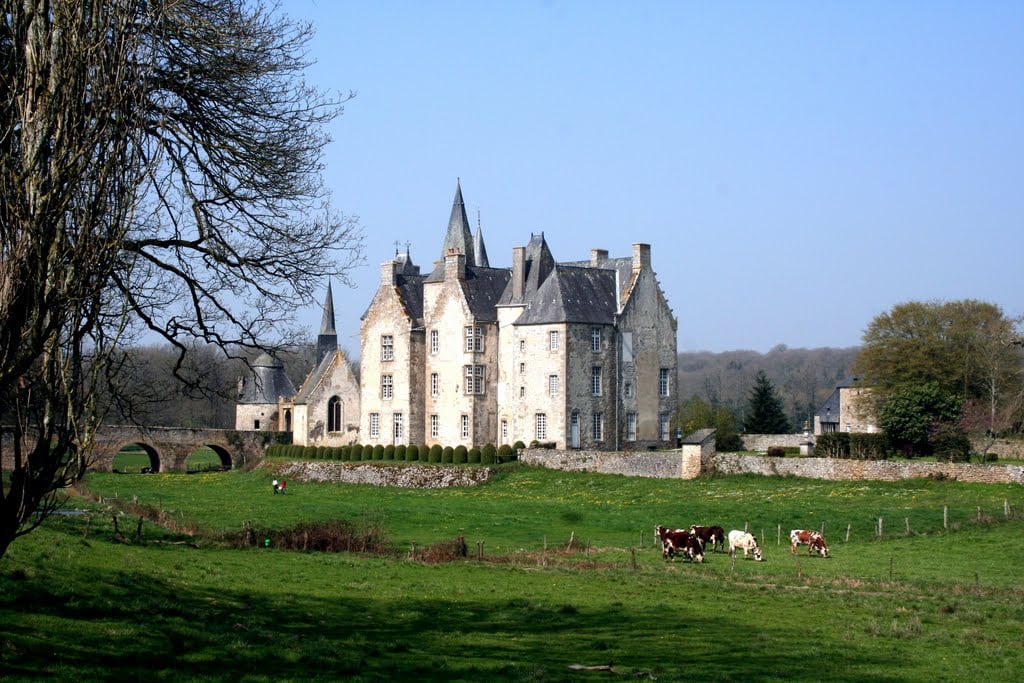
The beginning of the construction dates from the 13th century, at the time it was fortified, there remains an impressive bridge with three arches that span the moat which has now dried up. Originally the castle was surrounded by a large pond, a drawbridge interrupted the stone bridge before entering through the porch into the courtyard of the castle.
The Château de Bourgon in Mayenne is open to the public from July 1 to August 15 and all year round by appointment. Tickets are 12€/person and a tour lasts approximately 45 minutes and also includes a visit to the interior of the castle. You can also spend the night at the Chateaux in one of their gorgeous guest rooms.
Chateau Gontier
Château-Gontier is the name of the village but it doesn’t actually have a chateau anymore. However, you can stroll around the narrow, cobbled streets and admire the elegant half-timbered houses that have withstood the ravages of time.
Take some time to explore the magnificent Ursuline convent whose outstanding restoration work has made the convent a bright and welcoming place. Its chapel offers the perfect setting for the exhibitions of artists in residence. The buildings also regularly play host to an eclectic and varied program of concerts and theatre.
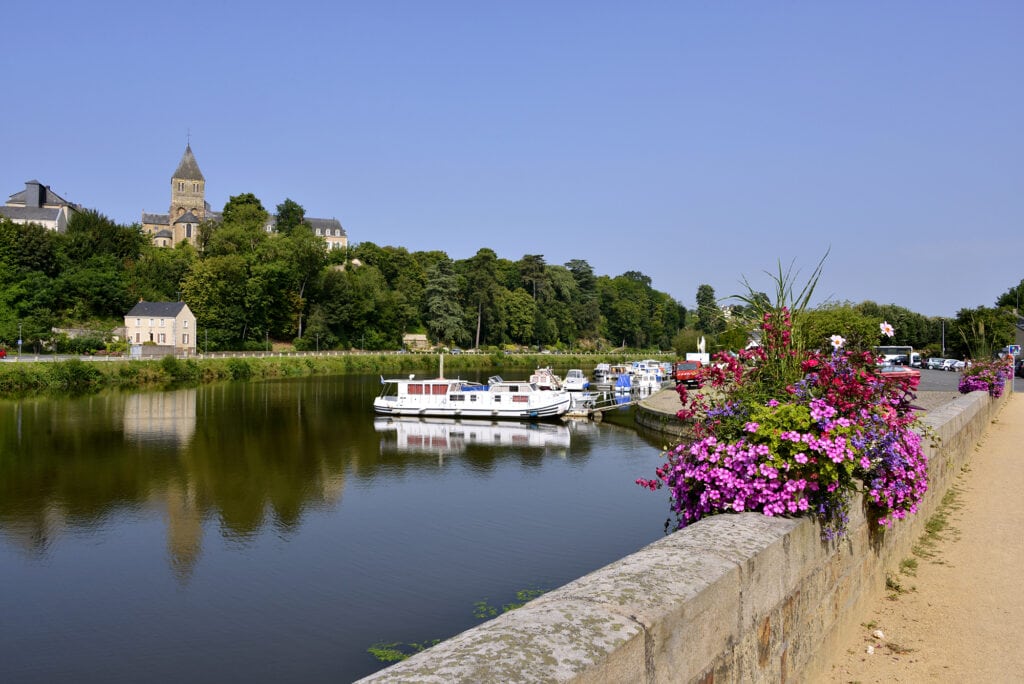
Château-Gontier-sur-Mayenne is famous for its public gardens including A medieval Garden located at the foot of the ruined castle ramparts. The Scented Garden is near the river with over 80 fragrant flowers and herbs. The Jardin des Essais or the experimental garden contains all the flowers used in the city’s flower baskets and flower beds.
And the Jardin du Bout du Monde (“Garden at the end of the world”) is a flower-filled park overlooking the banks of the Mayenne. Century-old trees, perennial flowers all year round, and don’t be surprised if you come across a few goats along the way.
Saint-Denis d’Anjou
In the southeast corner of the department, the small town of Saint-Denis d’Anjou has preserved its 16th-century market hall and other houses from this period and it was very pleasant to explore, especially in early summer when the streets are filled with flowers.
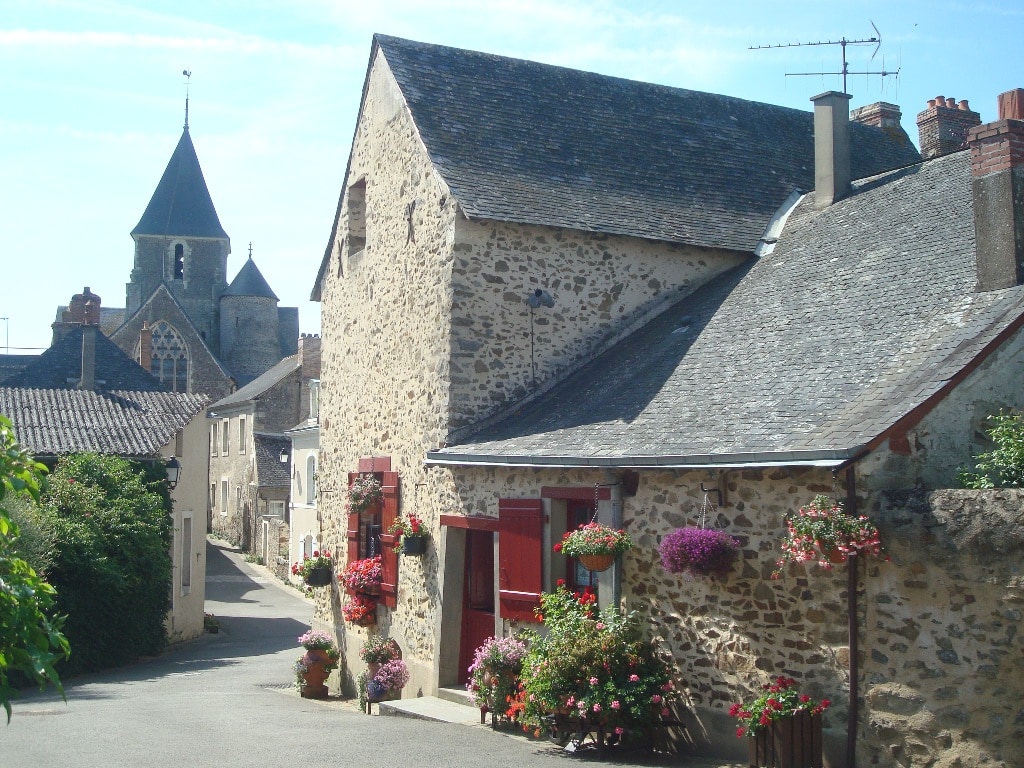
Clairmont Abbey
Clairmont Abbey is a Cistercian abbey founded in 1152 by Guy V Lord of Laval. Clairmont was the heart of monastic life in the area and welcomed up to 40 monks and 60 lay brothers, which declined from the 16th century. During the revolution in 1794, the abbey was sold as national property and transformed into an agricultural estate.
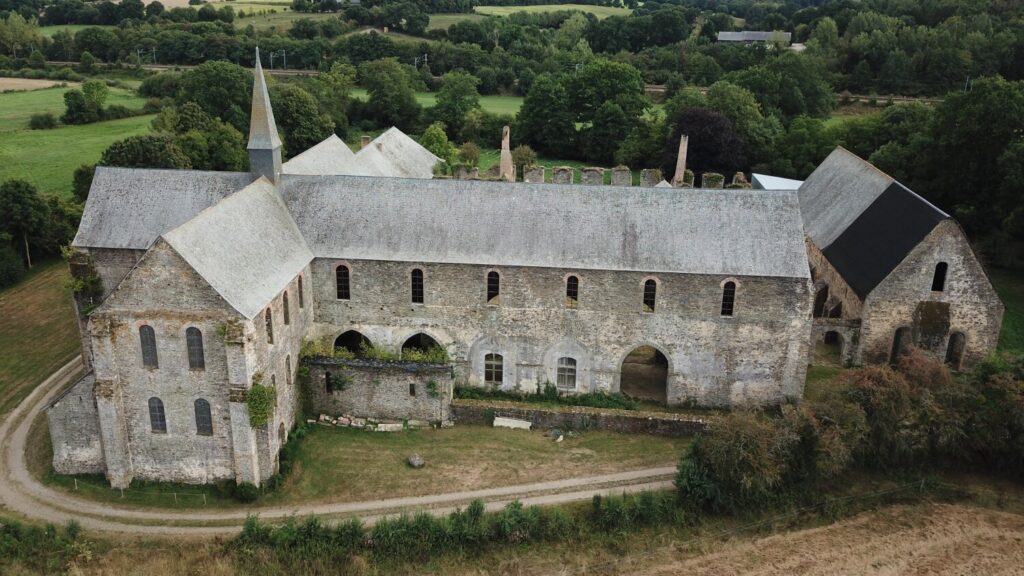
In 1936, two Parisian ladies discovered this monastic complex and began a project to save it, in 1954 they managed to take over the site and restored this national monument. Tickets to visit the Abby are for Adults: 8€
Manor of Favry
The Manor of Favry, a 16th-century residence, can be experienced as a guest staying in one of the magnificent rooms within the house or you can tour the beautiful gardens. These French gardens are punctuated with boxwood topiaries and arbours which define the green rooms. Topiary art, white scented roses, cherry trees and creeping roses drench a charming courtyard with its arbour of wisteria. Stroll along the river lined with rare trees, and visit the amazing vegetable garden with its willow gazebos and vegetables planted in the shape of the Cross of St. Andrew.
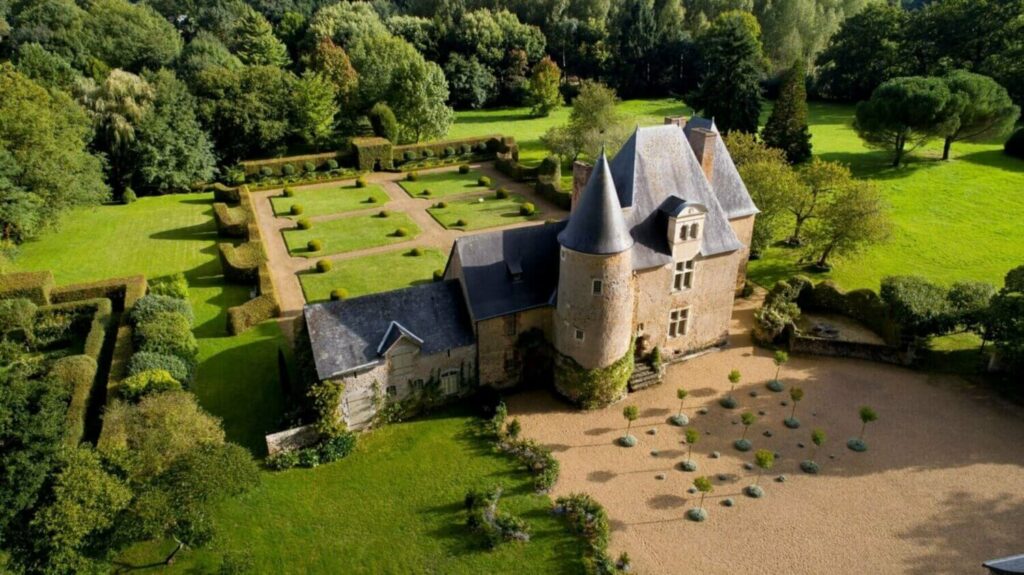
The Garden opening dates and times are from May 15 to August 15 and from September 15 to October 15 and the hours are Thursday to Sunday from 10.30 a.m. to 12.30 p.m. and from 2 p.m. to 6 p.m. Ticket costs €7 per adult.
La Grande Courbe
On the rural road that leads from Brée to Saint-Christophe-du-Luat, the Château de la Grande Courbe suddenly appears, like a fantasy castle. The ruined gatehouse closing off the courtyard had moats fed by the Jouanne River and a large tower stands above the trees.
You pass through the semi-circular gate that used to be a drawbridge, backed on one side by the walled garden and on the other by outbuildings with large sloping roofs, and an interior moat that was fed by the Jouanne River. These fortifications were completed at the time of the Wars of Religion, completing the transformation into a castle.
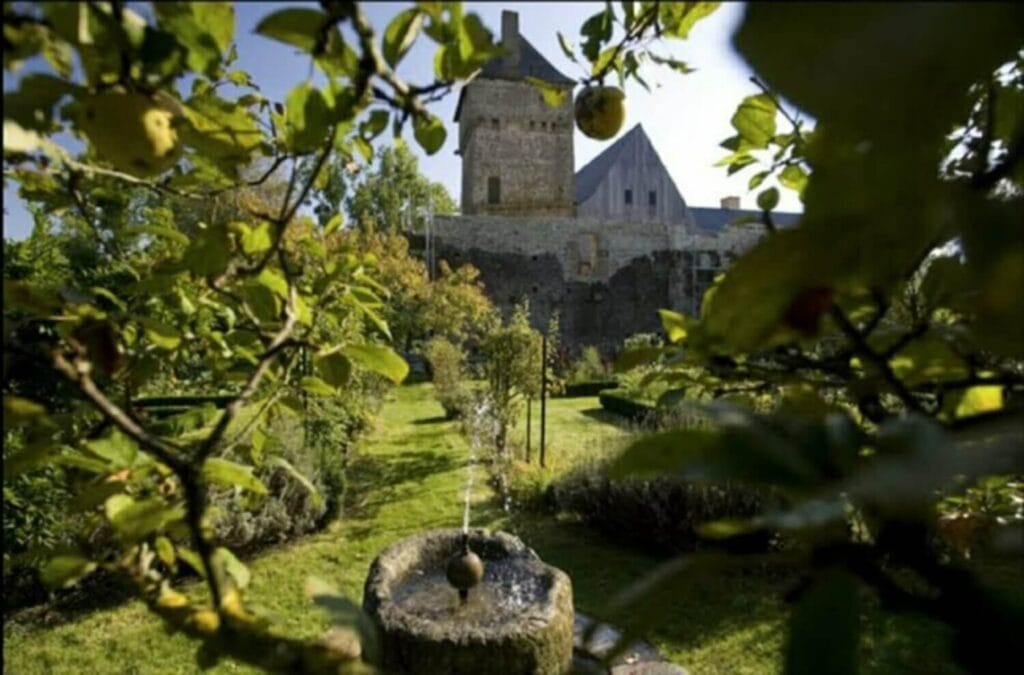
At the foot of the keep, a Renaissance-style garden, structured by four alleys which, meeting around a small fountain in the centre, frame boxwood parterres executed according to the designs of Olivier de Serres, have been recreated in its former location. This garden was once enclosed by a surrounding wall flanked by two round towers
The buildings that make up the Grande Courbe were built over 4 centuries and belonged to powerful Mayenne families over the years. Already a ruin when the Revolution broke out, it became a farm. Since 1972, Mr and Mrs. Dever have saved and restored it and now you can tour the buildings and gardens
Opening days and hours are from 10 a.m. to 12 p.m. and from 2 p.m. to 6 p.m. every day except Tuesday from July 1 to 31 and from September 14 to 30 the visit is free.
Hauterives castle and gardens
In 1209, Guillaume de Hauterives owns this large manor and many outbuildings. In 1485, the Lord of Laval granted recognition of the surrender of feudal rights. And in 1515, the seigniory was erected to the rank of Châtellenie.
Through marriages and inheritances, the château passed into the hands of several famous families, including the Du Bellay and the Hauteforts. Marie d’Hautefort stayed a few times at the Château. Called to court at the age of 14, she was the daughter of honour of Marie de Medici. She became the favourite of King Louis XIII.
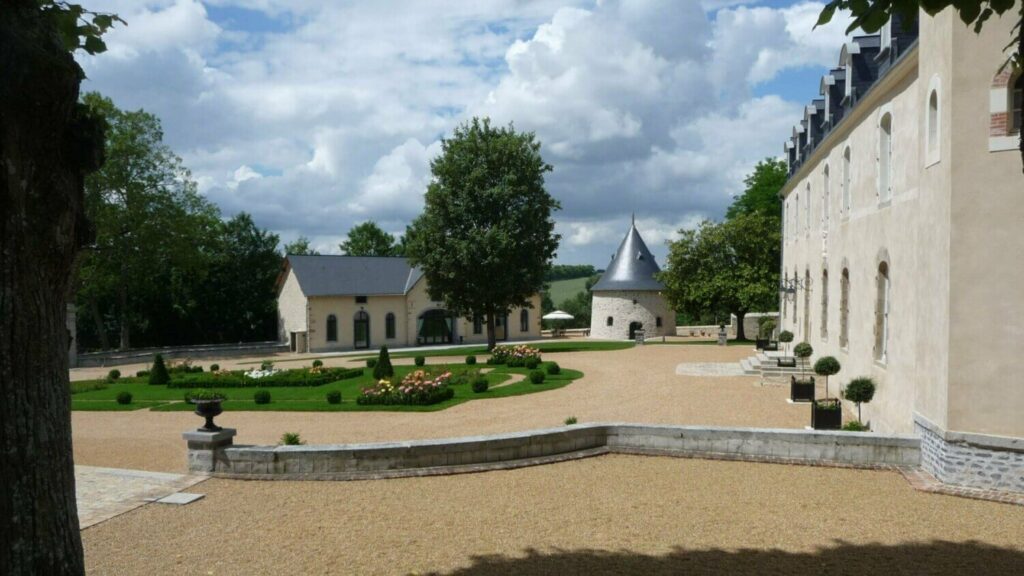
Among other buildings, there is a stunning dovecote from the 16th century (1533) and a chapel. The chapel, dedicated to Our Lady of Deliverance, was renovated in 1762. The castle remained abandoned for 30 years before being restored in 2007.
At the back of the chateau, you will discover a sumptuous walled terraced garden with several hundred roses surrounded by boxwoods. You can rent the Chateau for weddings and special events or have your wedding photos taken in the gardens. Tickets cost €5 for the chateau and you can visit the gardens free from 12 p.m. to 6 p.m., from May 1 to September 30, European Heritage Days and public holidays
Gardens and castle Le Puy
Lord François du Puy had his castle built on his land in Froidfond in 1650. He added the chapel at the end of the 17th century and the left wing in the courtyard at the beginning of the following century, then the large common area on the left and the adjoining farm.
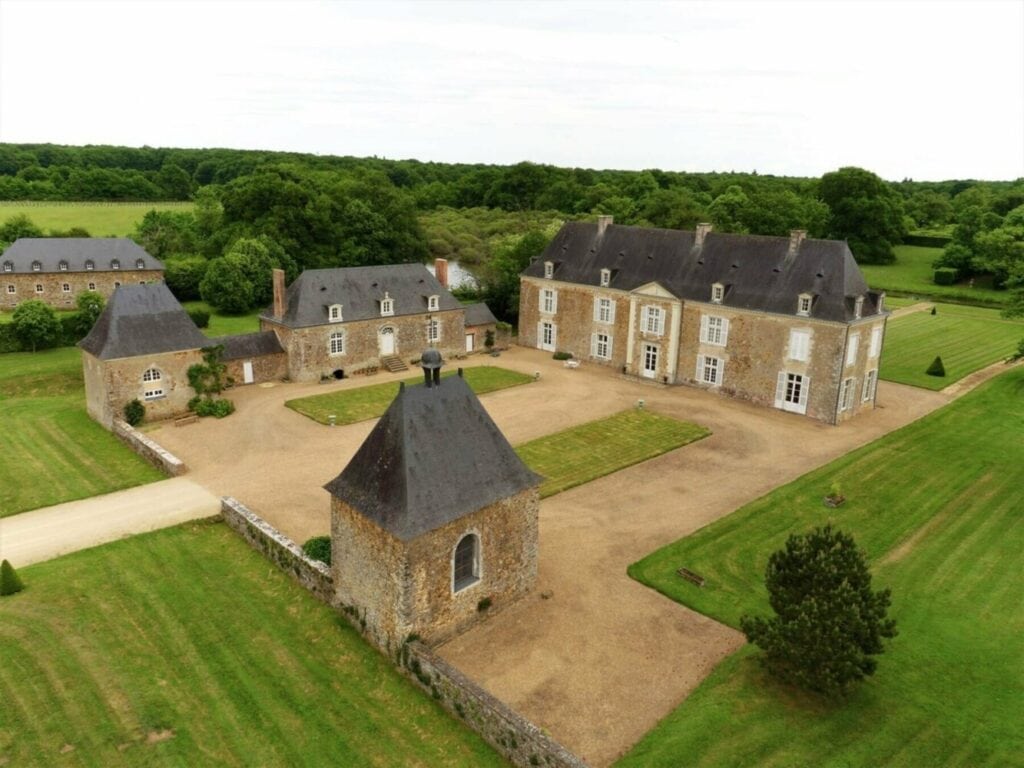
Between two large ponds, there is a park created in the middle of the 18th century in the classic French style. The park contains a box topiary, a moat, a pond and a bower; the latter, listed as a Historic Monument, there is also a labyrinth that is now being brought back to life. The Opening days and hours are from 12 p.m. to 6 p.m. from July 15 to August 31 and the entry cost is 2€ per person.
Chateau de la Rongere
The Château de la Rongère is situated within a magnificent site from where it enjoys a superb view of the Mayenne valley which it overlooks. A majestic alley of ash trees starting from the village of Saint Sulpice, between Laval and Château-Gontier, gives access to its garden, and it is classified as a Historic Monument.
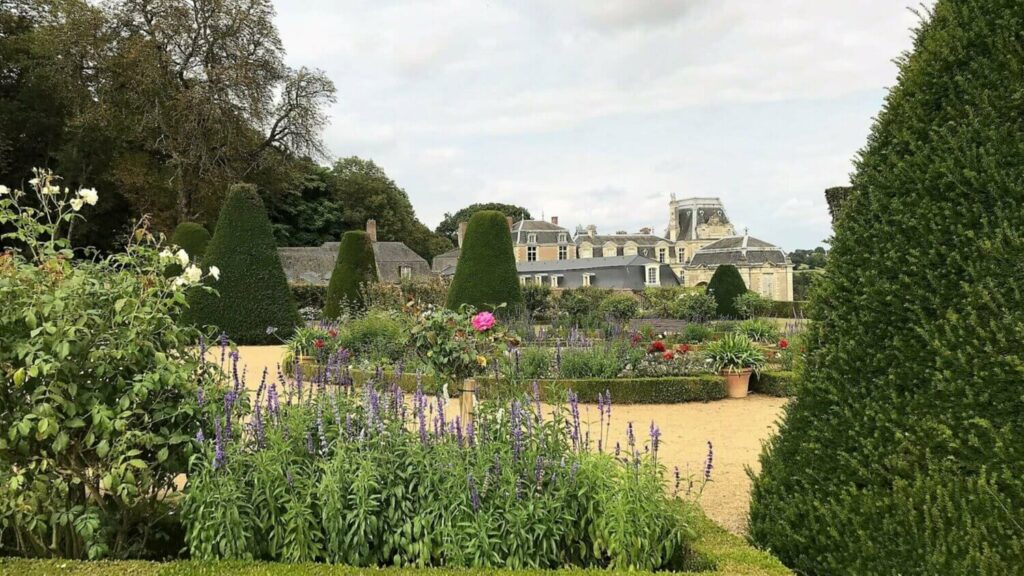
In the 13th century, the old feudal place of La Rongère controlled the river below. Three wings were successively built, Louis XIII, Louis XIV, Louis XV, the first 2 of which were restored in 1890. A very beautiful “French garden” created at the beginning of the 18th century added to the majesty of the place. Opening days and hours are from 11 a.m. to 6 p.m. from June 1 to September 30 entry Price is4€ for adults.
Château de Varennes l’Enfant
From the 12th century, a castle existed in Varennes. It has experienced many troubles over the centuries. Burned down in 1596, then sold as national property during the revolution and abandoned, then bought by its former owner who resold it in 1822
It was restored around 1860 in the Renaissance military style. Abandoned again in the 1940s, its interior was dismantled and sold or looted. Since 1965 various restorations and renovations have taken place to bring the chateau back as a historic monument.
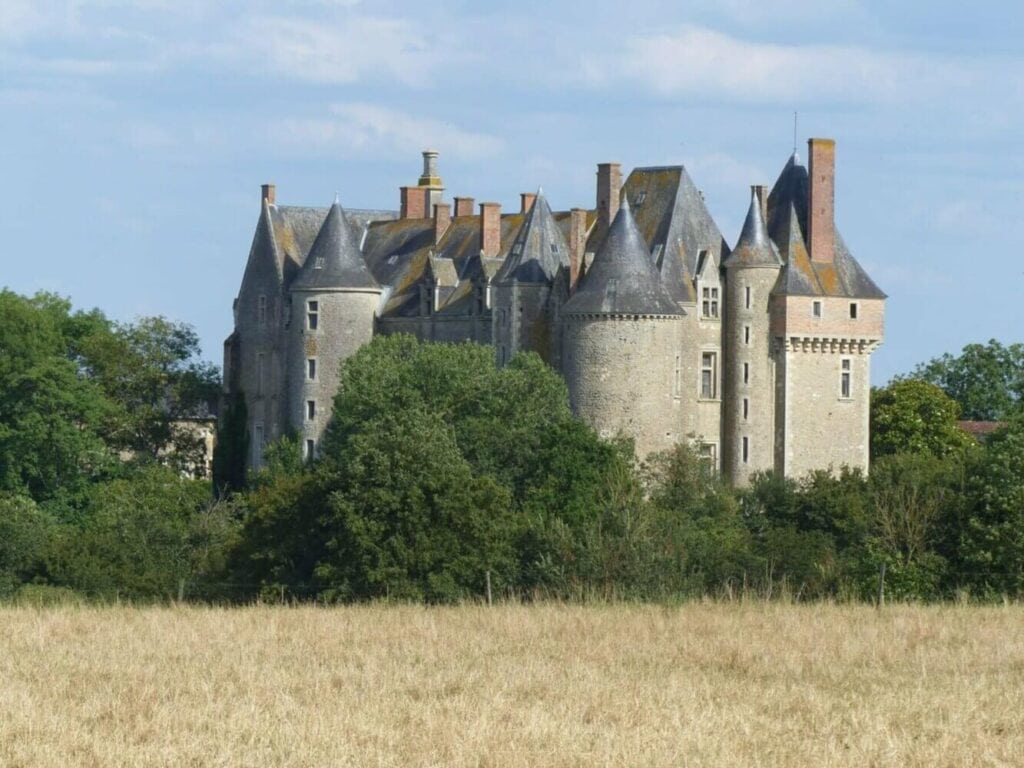
Opening days and hours are from 10 a.m. to 12 p.m. and from 2 p.m. to 7 p.m. from July 1 to August 4 and from August 20 to August 31 there are free visits of the exteriors except for Tuesday when guided tours take place at 3 p.m. the cost is €2 euros.
So now you can see why you need to explore this relatively undiscovered region of France.
You might also like
Beautiful villages in Normandy
Saint-Céneri-le-Gérei plus beaux villages – beautiful villages of France
Sainte Suzanne – One of the “Most Beautiful Villages in France”
Lassay-les-Châteaux a charming Petites Cités de Caractère
Castles of the Loire Valley France
Dinan France – medieval France at its finest
The Ultimate guide to visiting Rennes France
Food in Brittany: Fall in love with the food of Bretagne
The beaches of Normandy – lest we forget

